#sega mega 32x issue
Explore tagged Tumblr posts
Photo



EGM #68, March 95 - An early look at ‘Knuckles Chaotix’ on the 32x.
#Electronic Gaming Monthly#Issue 68#March 1995#egm#sega#megadrive#mega drive#genesis#knuckles chaotix#32x
56 notes
·
View notes
Text
PSA: Sega 32X Freezing Issues on VA0 Model 2 Genesis Consoles
The Sega 32X is an interesting piece of hardware. Opening it up reveals an unimaginable host of components crammed into a tiny plastic shell: Multiple PCBs, various forms of metal shielding, dual ribbon cables, a bunch of capacitors, hand-soldered wires connecting various points on the PCBs, not to mention processing units housed inside the cartridge end of the unit itself. Love it or hate it, there’s something impressive about smashing so much tech into such a small amount of space.
Unfortunately, over the years the 32X hasn’t garnered the greatest reputation, particularly in regards to its reliability. It’s not uncommon to hear end user reports of black screen issues, inconsistent video, noisy sound output and wavy video, to name a few problems. I’m not entirely sure if this is due to its crammed design, or simply the result of aging parts, but either way it doesn’t bode well for owners of the add-on.
This isn’t even taking into consideration issues new users might run into by simply not understanding what is needed to get a 32X to work to begin with. For instance, the A/V link cable that allows both the Genesis and 32X-produced visuals to appear on screen properly. Or, the metal clips that mount in the cartridge slot for shielding purposes (and to help keep the unit from shaking around in the Genesis cart slot, preventing unintentional bumps from freezing your games). These are examples of things that may not appear in system bundles for sale online, causing extra confusion for new buyers.
Some of these issues 32X users should be wary of are far better documented than others. One interesting problem that falls into the later category is 32X games freezing on VA0 revision Model 2 Sega Genesis consoles. Basically, any 32X game that is paired with this Genesis revision will result in a hard crash just moments into the game.
While this issue isn’t particularly well documented online, it is something Sega was aware of when the 32X was current. The “Extension Unit” (according to Sega’s Official Service Manual, which can be seen here at Sega Retro), is a part meant specifically for VA0 Model 2 Genesis consoles. It slots into the Genesis expansion port, correcting some sort of conflict between it and the 32X, fixing the crashing issue in the process. Those with a VA0 model Genesis 2 along with both the 32X and Sega CD attachments will never experience this issue, as the Sega CD populating the expansion slot corrects the problem entirely.
I experienced (and learned from) this issue the hard way after I received Analogue’s excellent Mega SG FPGA console in 2019. I migrated my Sega CD to that, freeing up my still-32X-populated Genesis Model 2’s expansion slot in the process. For those unaware, without Analogue’s DAC device, the Mega SG is not compatible with the 32X out of the box.
When my 32X games began crashing seemingly out of no where, I did just about everything I could to troubleshoot it. I first opened it up and re-seated the ribbon cables (something I had already done once with this specific unit many years ago). I then thoroughly cleaned the cart contacts on both ends of the 32X, along with my Genesis 2. I swapped A/C adapters, ordered a new A/V link cable that runs between the Genesis and 32X, and even purchased a new Model 2 RGB cable (the old one had been acting up, giving signal drops, so it was worth a shot).
I was about ready to send the system off to a repair shop to have a capacitor replacement done as a last resort, until I stumbled upon this video that demonstrated my problem exactly. The video creator showed a 32X game working with his Sega CD attached, but then showed what happened when he disconnected the Genesis from it. Just a few moments in, full-on game crash. He then showed where to find the console revision number, demonstrating it being a VA0 revision.
It was at that moment I opened up my Genesis system to verify my revision, and sure enough it was a VA0. Instead of moving my Sega CD back to my Model 2 Genesis, I dug out my 32X system box where I keep extra connectors and attachments I don’t use, such as the fabled Extension Unit (previously known to me as “the part in my 32X box that doesn’t do anything”).
This Extension Unit was bundled with various 32X system packages due to the VA0 incompatibility. Until now I had no use for it, nor had any idea what the part actually did. With the Extension Unit in place, my Genesis 2 and 32X combo has been working perfectly. No more games freezing!
On a side note, it is known that VA0 Model 2 consoles aren’t generally the best way to experience the Sega Genesis. These revisions are notorious for having a different sound chip, resulting in tinny audio. The video may also be iffy compared to other models depending on what video encoder it is using (you won’t know until opening it up).
For anyone curious on how to identify the various versions of the Sega Genesis, Sega-16 has a very useful guide on how to do just that. Another option is to physically open your console, which is the route I took. With Model 2 Genesis systems, there are only a handful of screws underneath the console. It comes apart easily and after that you will need to remove the metal shielding (this has significantly more screws). The revision will be listed on the motherboard itself.
An easy way around this for some is to simply buy another Genesis system. However, 32X users might not be able to justify investing extra money into another model console when they already have one. As long as one has the Extension Unit or a Sega CD attached, they can bypass this crashing issue completely. I do feel as more 32X owners begin migrating their Sega CD units over to the Mega SG (or users begin consolidating their Genesis and CD collections down into something like a MiSTer), VA0 + 32X incompatibilities are likely to become more common as time moves on.
#32x freezing issue#32x troubleshooting#32x game crash#32x crashing#sega 32x problems#sega 32x va0 genesis#sega 32x extension unit#troubleshooting sega 32x#fix freezing issue sega 32x#sega mega 32x issue
0 notes
Photo
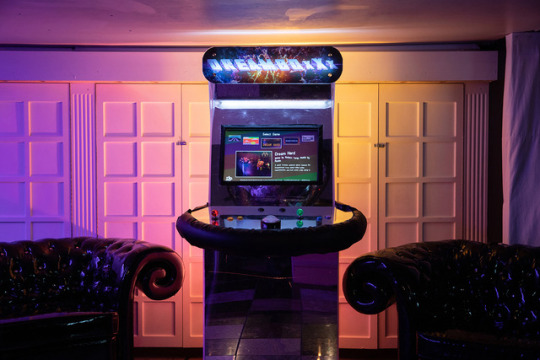
"weLCUM to the motherfucking Queer matrixXx"
In part 1 of my recap of stuff tweeted during the later half of May, over at @AttractMode, I mentioned that one thing that kept me awfully busy… hence the backlog and two-part recap for Tumblr & Medium… was Death By Audio Arcade X Dreamhouse II.
The proper/full name of the soiree was Ova the Rainbow: DreamBoxXx, which is where most of these photos were taken, with a few from Death By Audio Arcade X Dreamhouse I; the photographer on the behalf of Gothamist was there for both opening & closing parties, to help add color to their story...




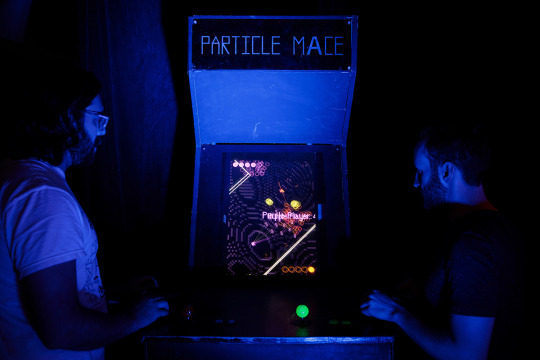


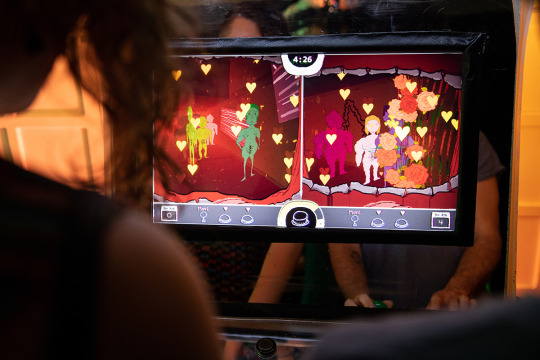

... BTW, the arcade will open one last time, this Friday (June 8th). Doors open at 7!
And as for the rest of last month... well... back to the subject of arcades for a sec; it’s a dream of many to have the full experience at home, though space is obviously the primary issue. Thankfully you (or your Lego minifigs to be exact) have options (via @ActionFigured)...
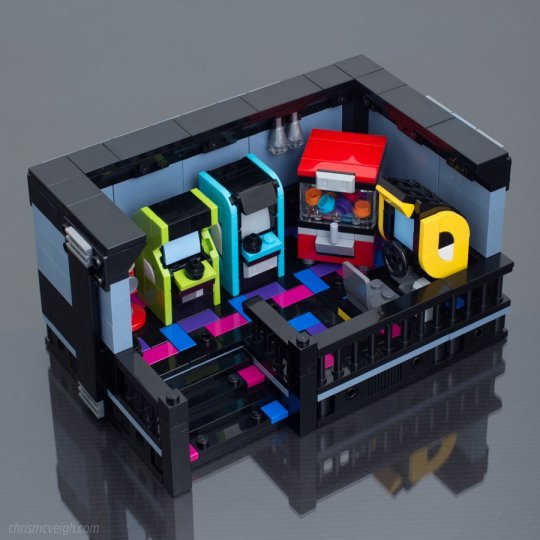
This Blast City shirt was designed on a CRT monitor, making it extra legit (no word if it was in TATE orientation tho; via theyetee.com)...

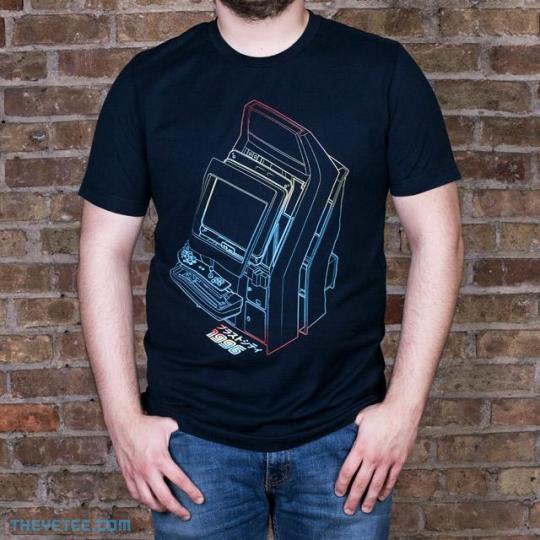
I basically know nothing about Avail, though appears to be a Target or H&M-like retail entity for Japan? Well recently they had a Gradius shirt for sale, but I missed my chance to save a copy of the PDF circular from which it made its seemingly sole appearance.
Hence why I had resort to blowing up this screencap (via miki800.com)...
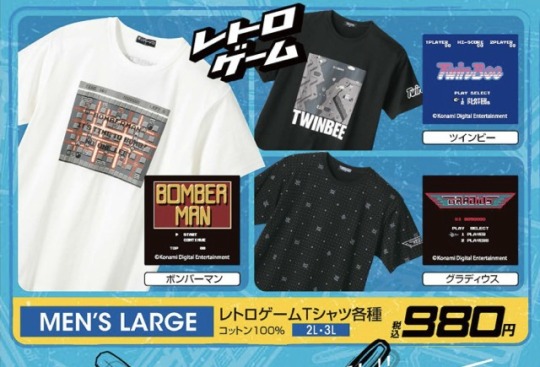

There's actually a 2nd Gradius tee, and we thankfully have a far better look at it this time (via miki800.com)…
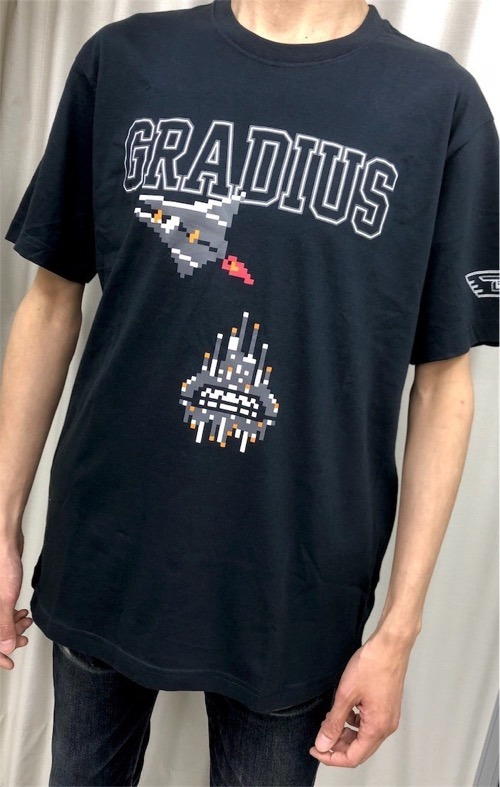
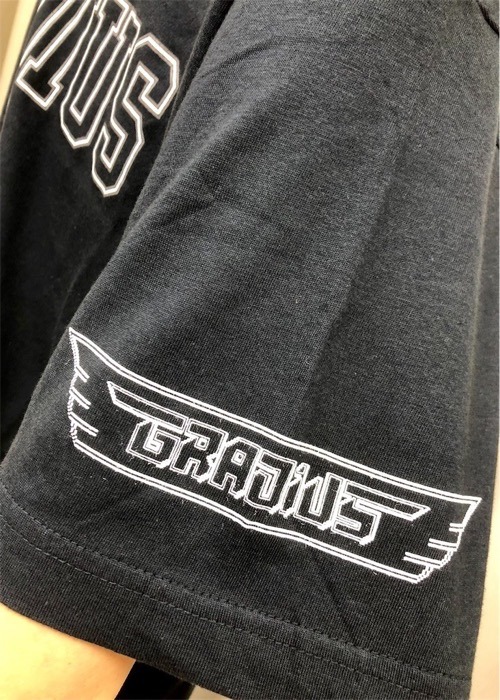
... I almost have to wonder if the 1st one was a mock-up or placeholder or something, cuz I seriously cannot find an image of it anywhere.
Few things get me as giddy as a nice 180 camera turn around with sprites (via segacity)...
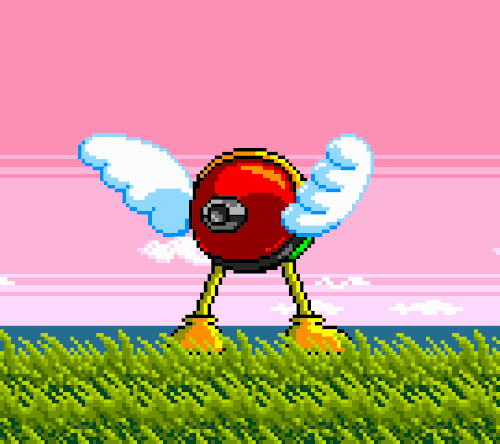
And 3D turnarounds of polygonal characters are cool, provided that they’re watercolored (via typhlosionofficial)...
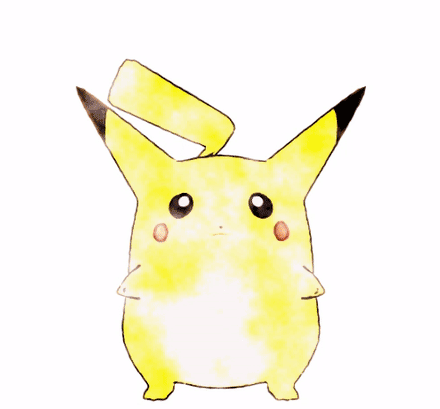
Same (via @BauceSauce)...

Sorry, but the sight of shelf after shelf, all bucking under the massive weight of countless carts & discs, is an eyesore IMHO. Instead, a modest pile of software with plenty of breathing room work best for me (via sixteen-bit)...

Such a beautifully personalized iPhone is essentially an iPhone for life (via miki800)...
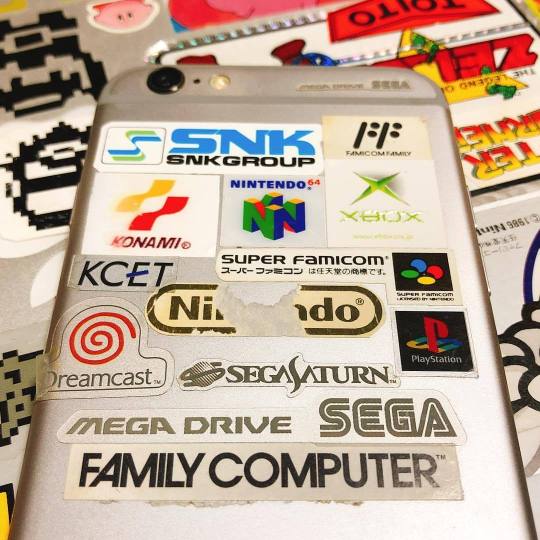
A (video game) toy chest… a (video game) treasure chest… basically both? (via miki800)...

Remember hearing about Street Fighter 2 X Transformers? Well, they're finally here (via tfw2005.com)...

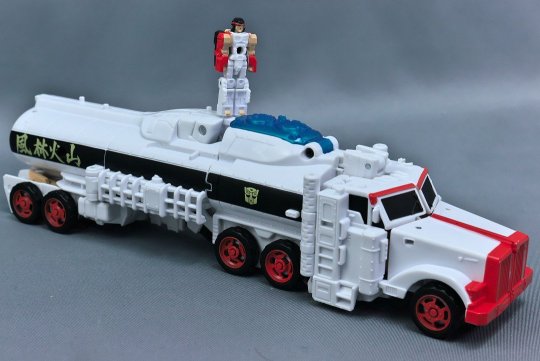
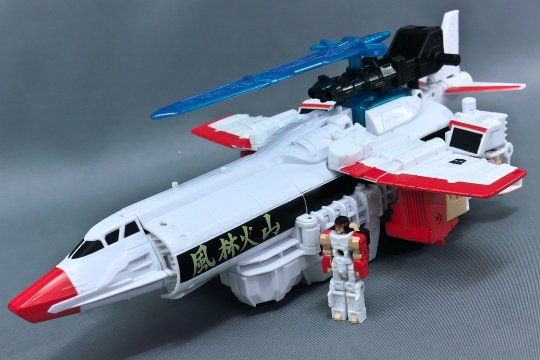
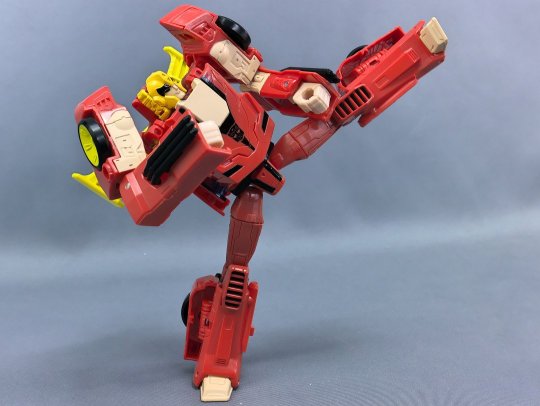
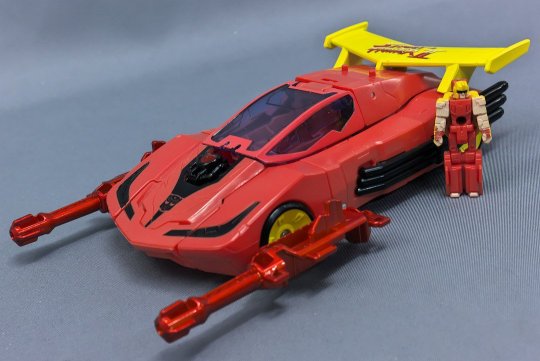
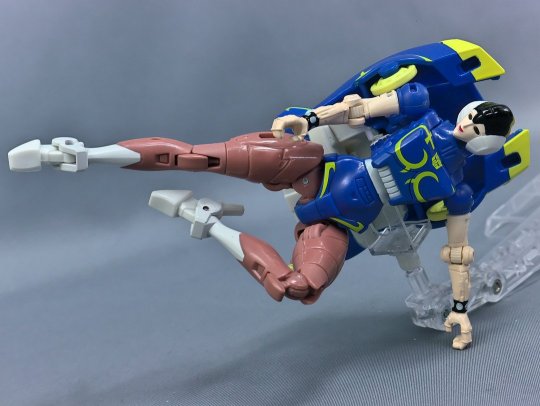
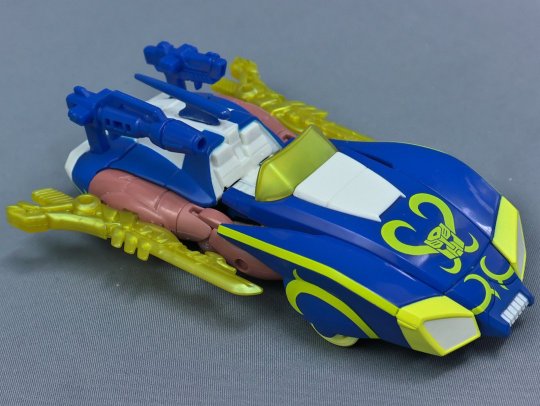
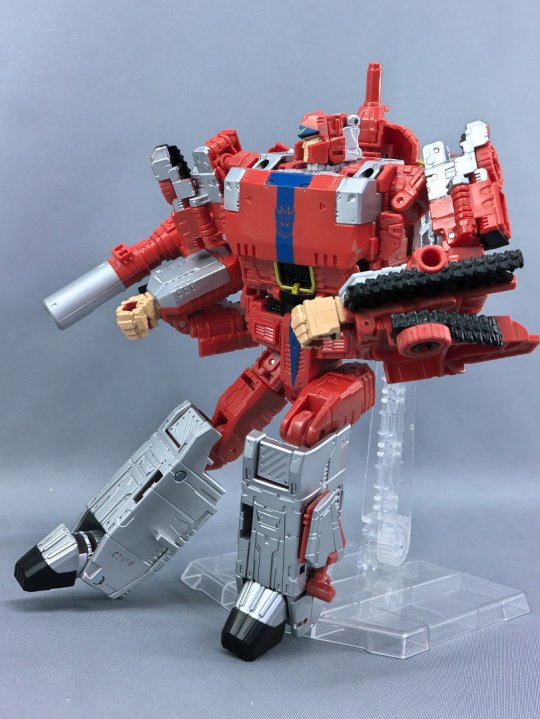
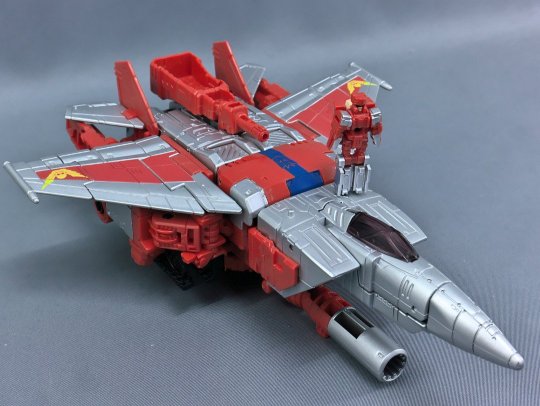
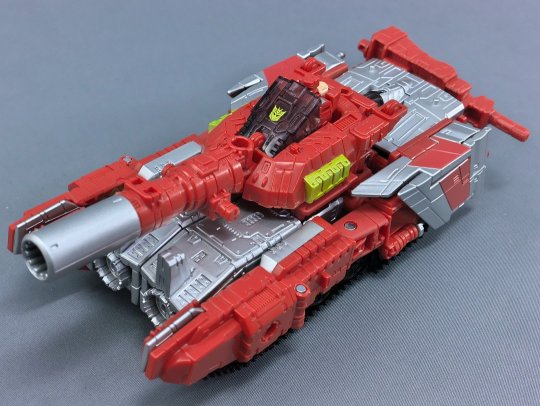
To be honest I have enough toys. Whereas I could always use more storage! Hence my interest in these SF2 USB sticks. But I can’t decide which World Warrior I want to see in such sad shape all the (via miki800.com)...
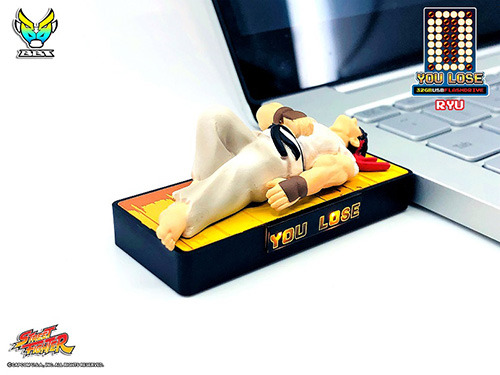
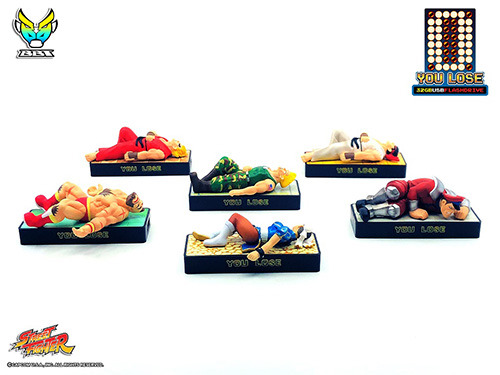
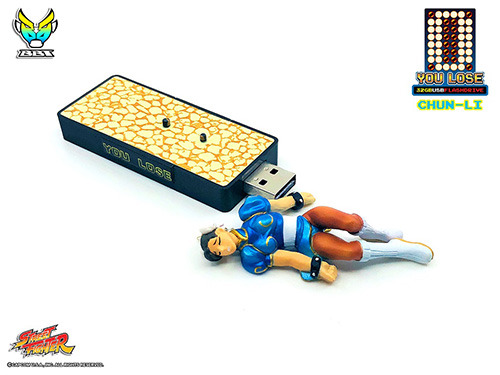
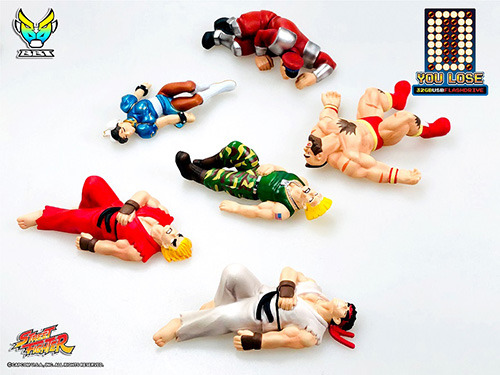
Time for another crossover, specifically Virtual On X bunny girls; a custom model kit of Angelan (via shop2000.com)...

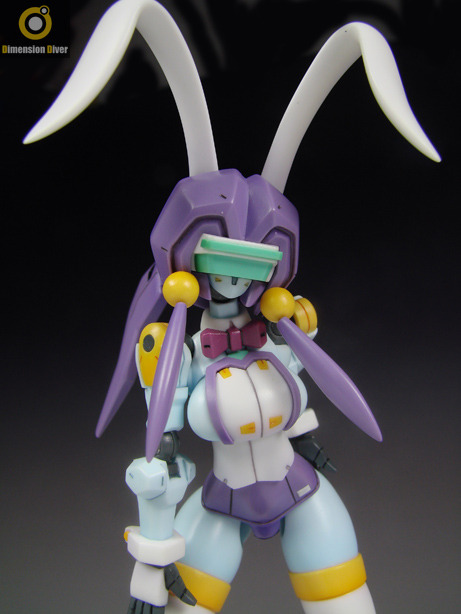
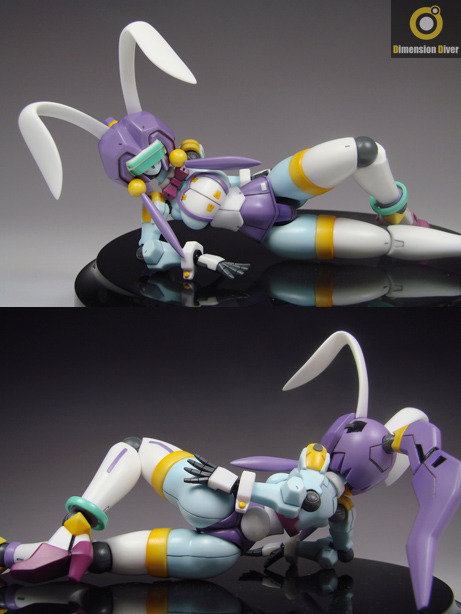
A look at all the Tokyo Game Show poster girls since 2010 (via videogamesdensetsu)...



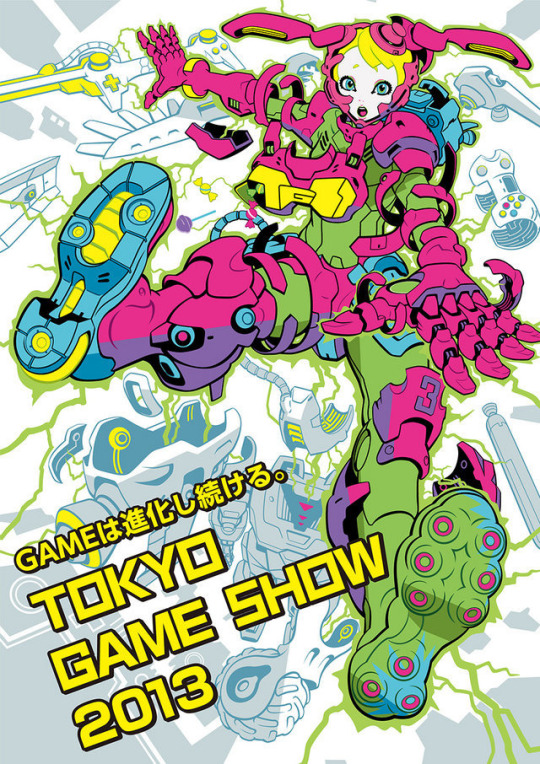
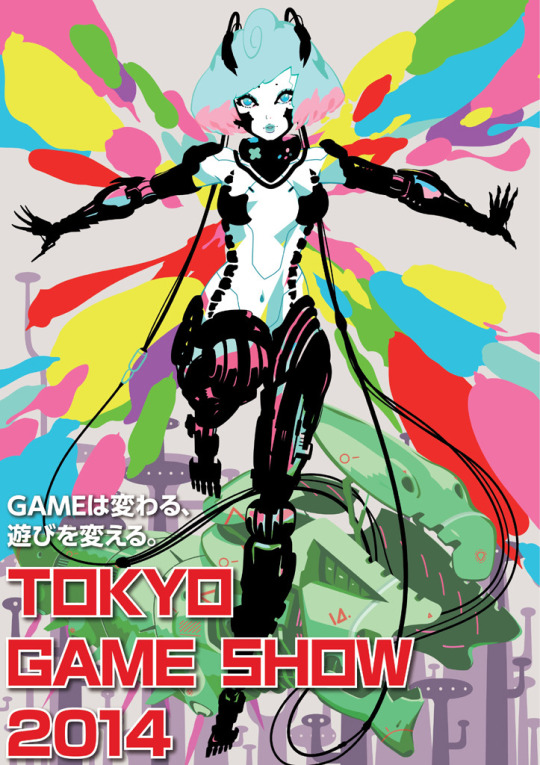
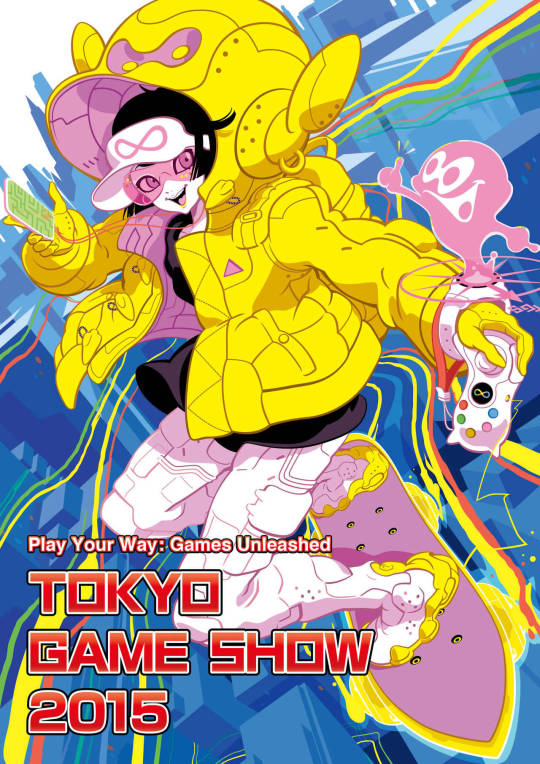
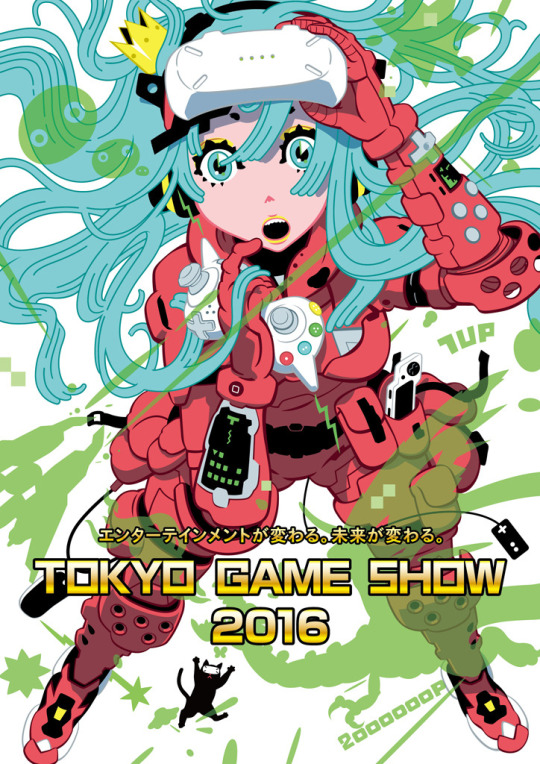
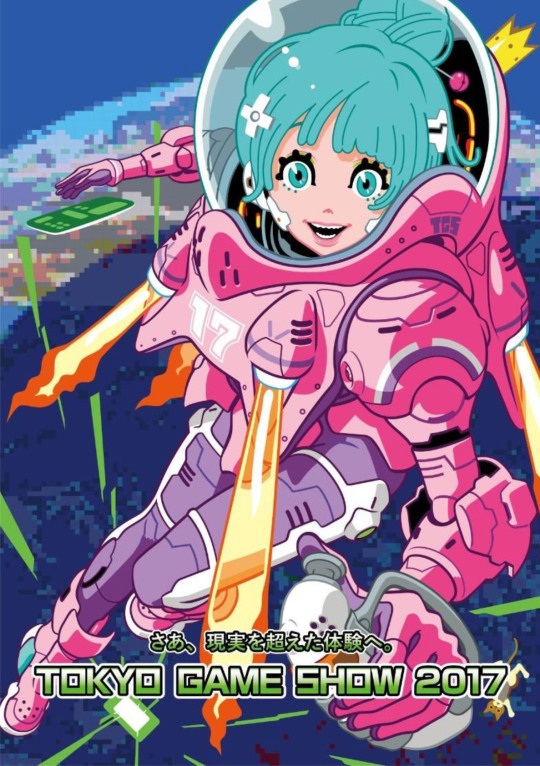

The first Famciase of 2018 to get my attention now has a fake ad to go with the fake game (via pepesalot)...
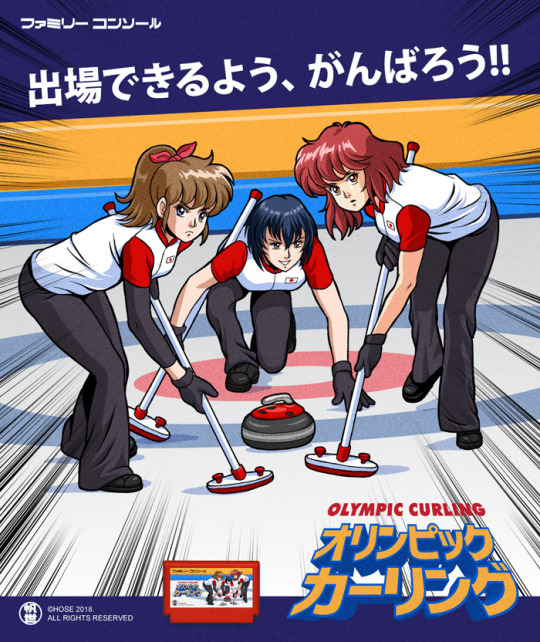
I'm 99.99% confident that this gaming set up/living quarters (via @miaumiauzmiau)...
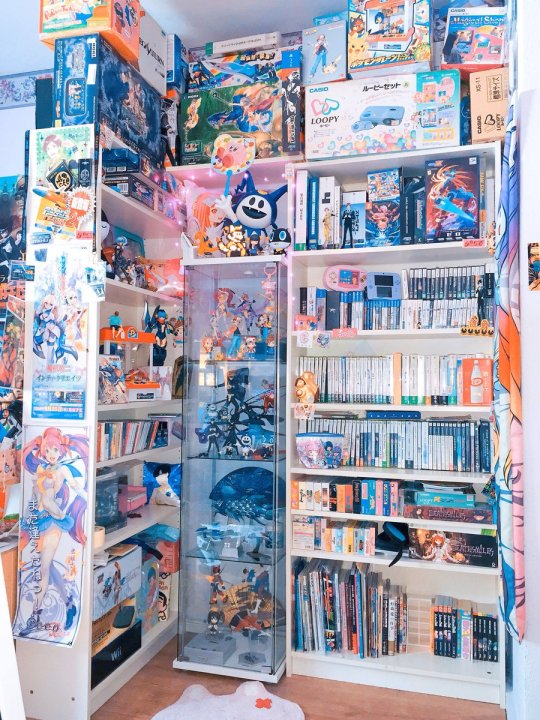
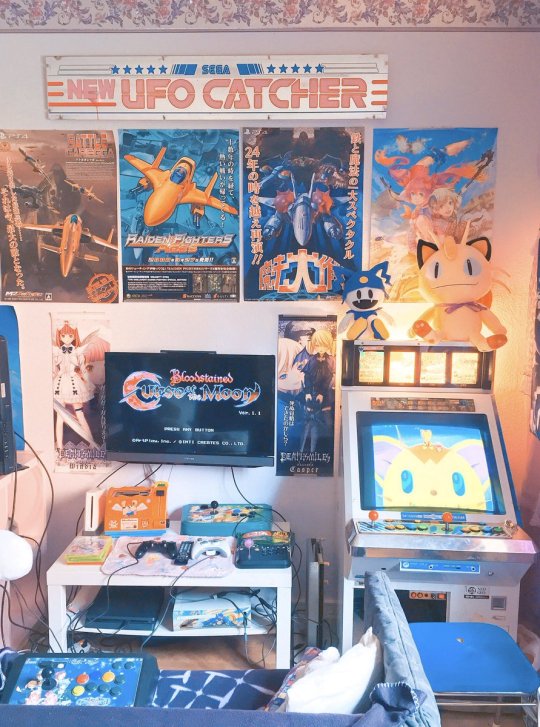
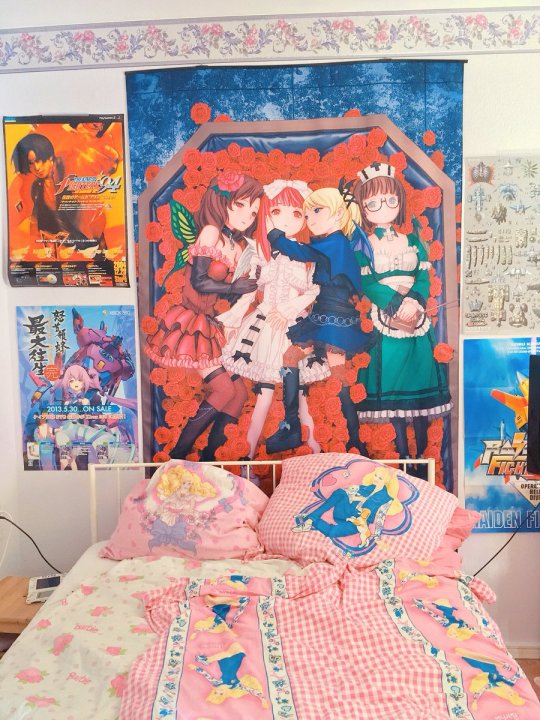
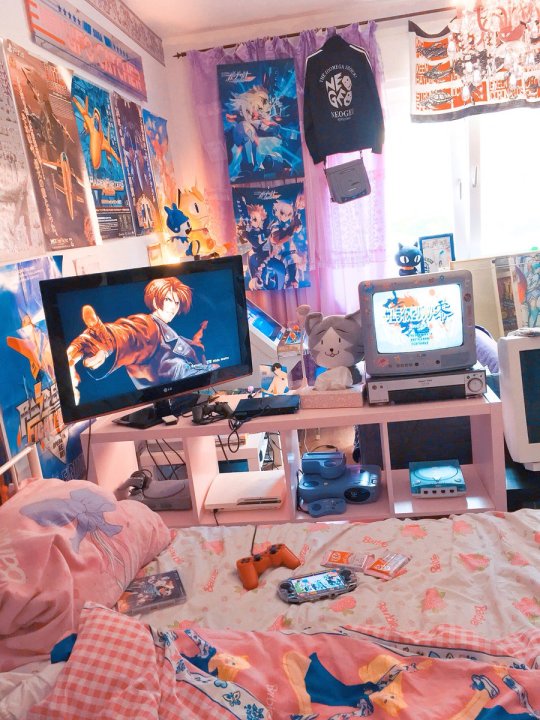

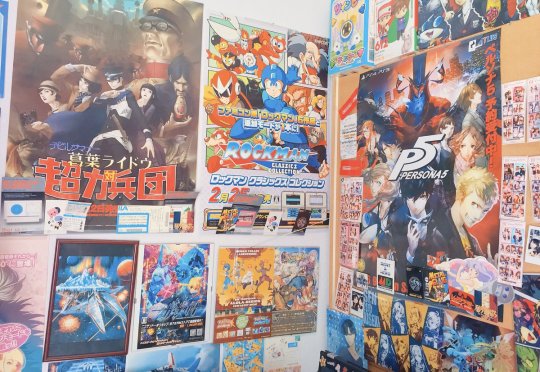
... belongs to Polylina, aka Poririna, aka SEGA SATURN GAL (via this old post from a few years back)...
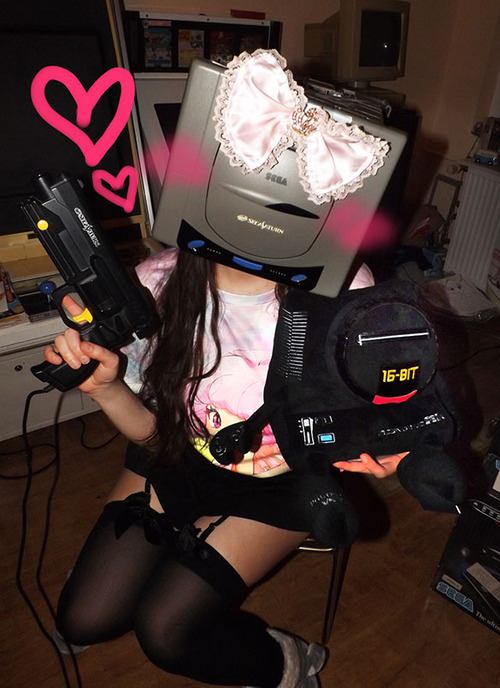
Note the similar pink curtains...

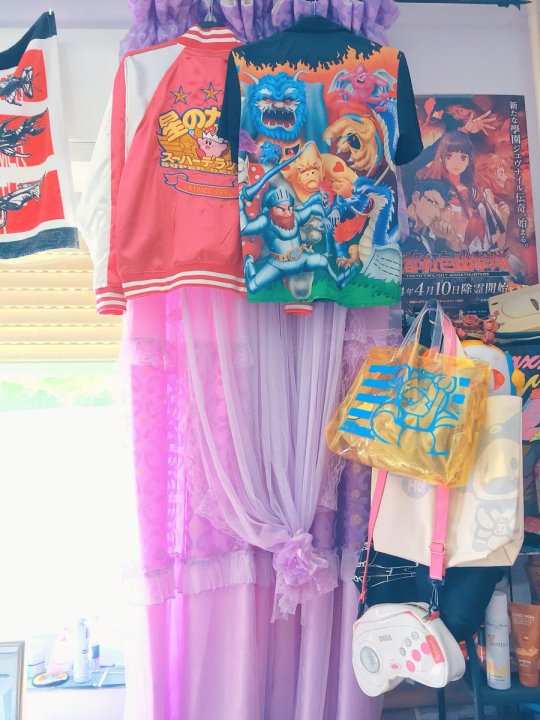
Who wears their Space Invaders shirt better? This guy (via shmups)…

Or this gal (via thesensualeye)...

The chairs for Space Invaders Frenzy has seen some serious shit (via oh-log-n)...

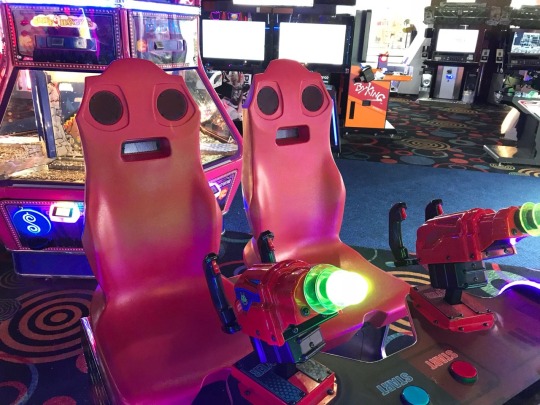
It’s a Space Invaders bathroom cuz why not (via it8bit)...
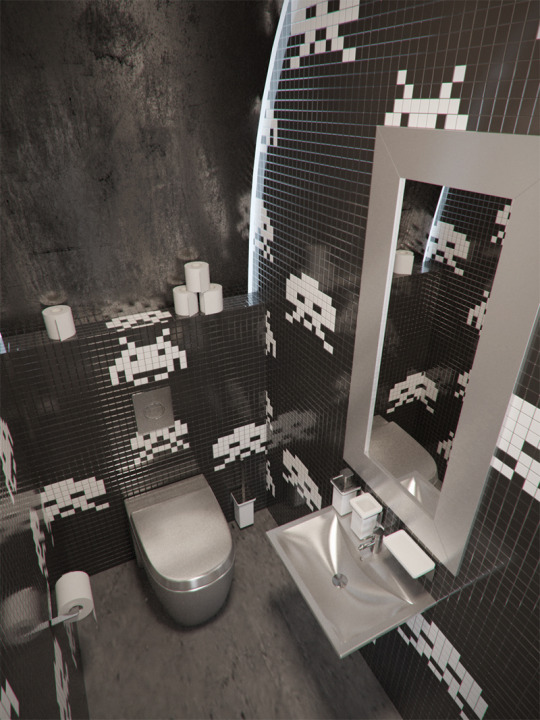
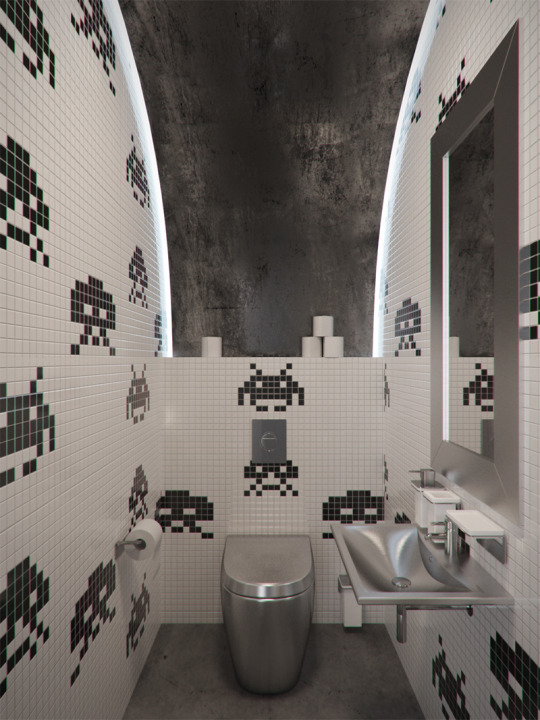

Nothing illustrates the harsh game making environment better than this one dev’s cardboard facade, underneath his desk, to emulate home (via videogamesdensetsu)...
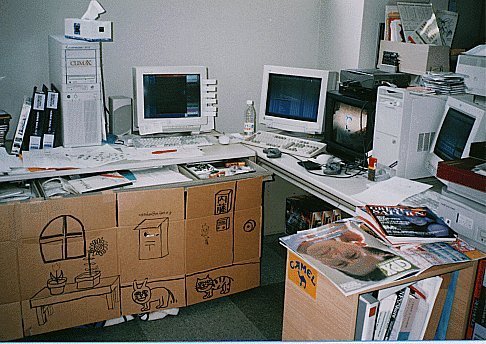
Kitchen pantry cat’s prices are way better than bedroom closet cat’s (via @tatuya01)...
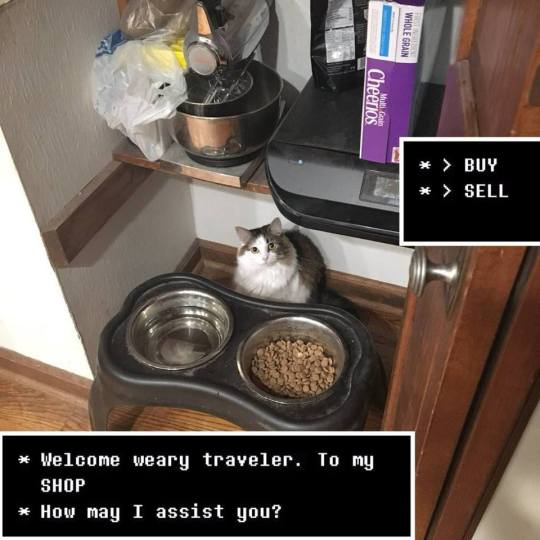
Memorial Day took place near the end of May, naturally, which meant another opportunity to repost my fave video starring the greatest soldier of the 20th century (via this other old post from years ago)...
youtube
Memorial Day weekend was also when I decided to post a bunch of YouTube vids; remember that one explaining why wiggling Sonic 3D Blast for the Genesis produces a level select? Did you also remember to subscribe to the channel? If so, you’d already know how Sonic R did transparencies on the Saturn...
youtube
Do you like Famiclones? Do you like Jackie Chan? Then you might like...
youtube
... I ended up going down a Jackie Chan rabbit hole, which resulted in a high-quality version of the infamous soundtrack to Hong Kong 97. Which in turn led to the discovery that the loop is actually a small portion of a full-length song entitled "I Love Beijing Tiananmen".
Sorry to ask everyone to click out, but I have a limit on how many videos I can embed in a single post and all.
Come to see what NES game Bithead1000 broke the bank on, stay to hear him bitch about Trapper Keepers...
youtube
Spoilers: it was Metal Storm, and can you believe that it managed to grace the cover of Nintendo Power? Not complaining of, more impressed than anything else (via shmups)...
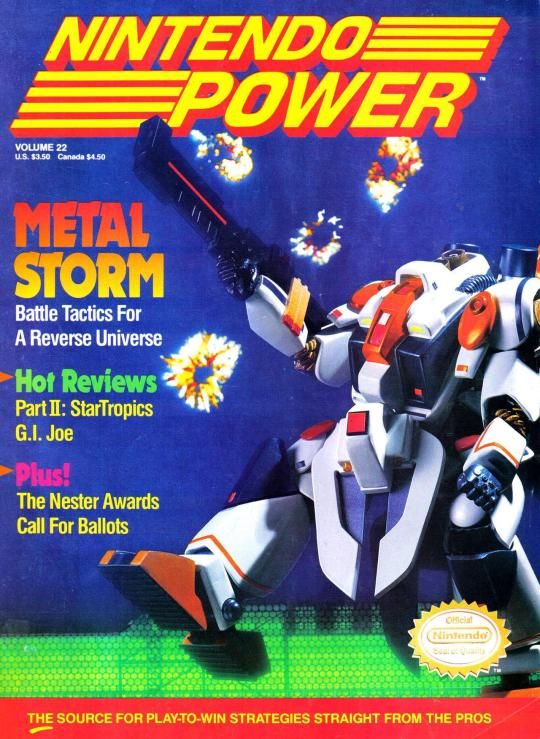
Time for some bonus Bithead1000, which I’m not posting cuz of the aforementioned technical limitation, plus it has nothing to do with games anyway: hearing him talk about old school rap made my Memorial Day and hopefully it'll make yours, no matter what date it is.
Yet another video I must abstain from embedding is Johnny Cage performs 4'33". Hopefully all of you fans of Mortal Kombat/experimental compositions/shitty webtoons do not feel slighted (via roman55)...

Another look at the “New Aero City” stick, this time with the intended color scheme of yellow for both the balltop & buttons (last time they were red, as seen here; via hibachicandy)...
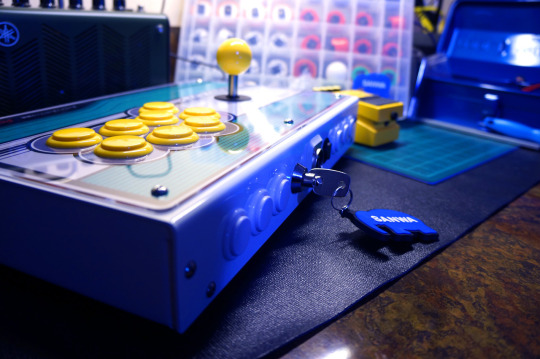
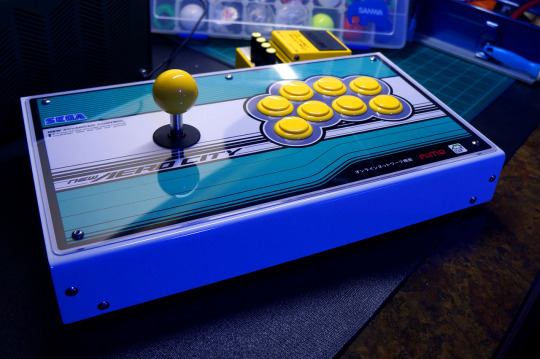
It’s the guy made Metal Gear and the guy who made Kong: Skull Island, playing Xevious & Ikaruga (via xtheo.ca)...

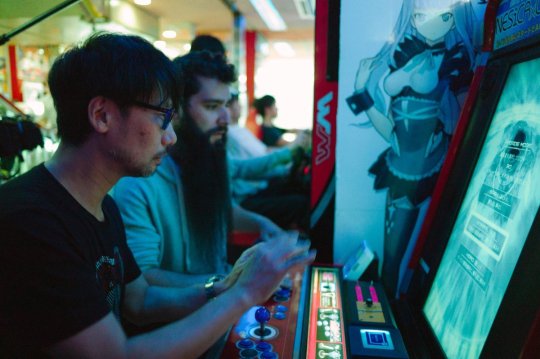
The beginning of the ultimate road trip (via lazywaifus)...

Like many others, I spent an entire morning pouring over that epic game collection before it was set to be auctioned off at the end of the month; my wish list included a SuperGrafx, TurboDuo, CD-i, Nuon, and Donkey Kong for the OG GB sealed… (via bodnarsauction.com)...
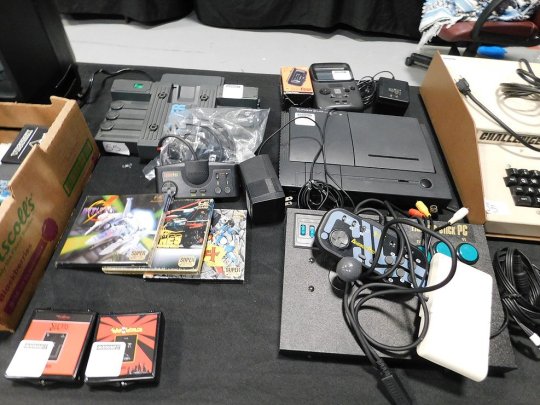

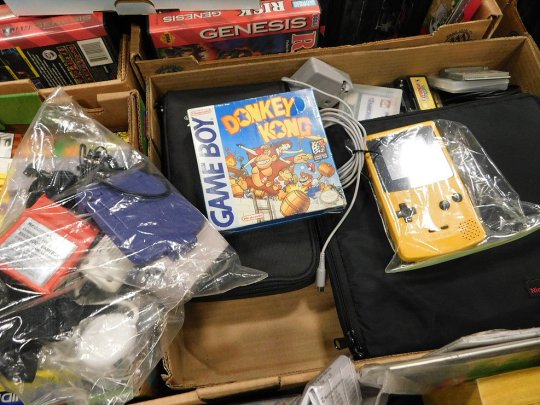
Alas, I couldn’t make the trip to Edison, NJ for the auction. Thankfully, @textfiles could; be sure to check all the photos he posted on May 31 for all that he saw...

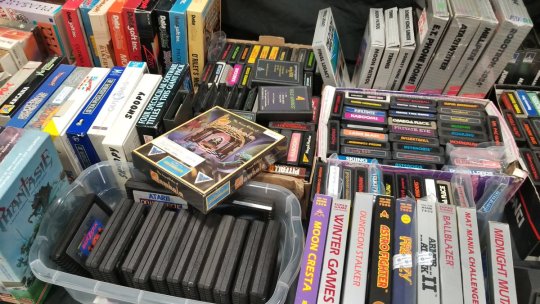
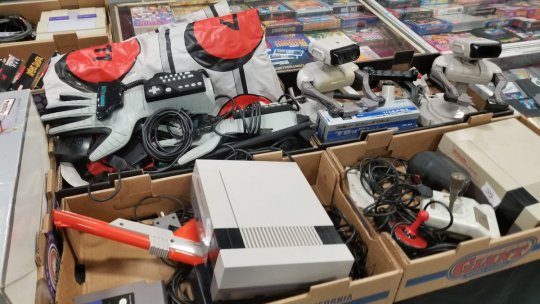
Am surprised it took this long to see something like this (via @gamesyouloved)...
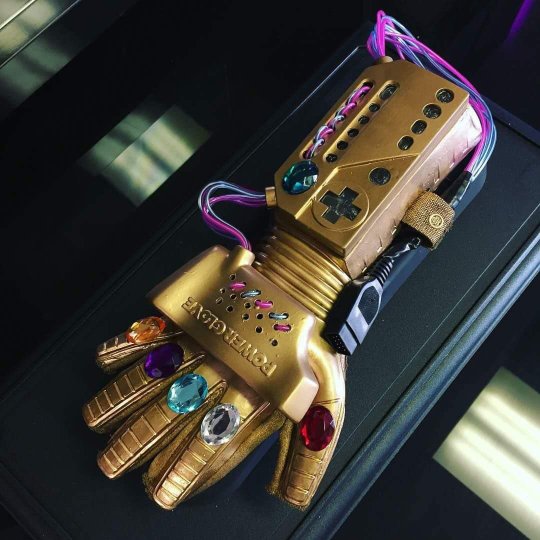
… The same source also posted this Sonic gif; I’ve looked everywhere for the source but zero luck… can anyone point me in the right direction?
Back to the aforementioned auction, or should I say the mass acquisition of old games; it’s always been a secret plan to collect a bunch of Super FX carts in order to extract the chips, for... something? (via pixelpolygon)
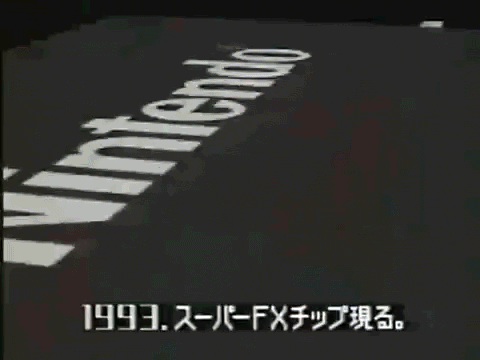
Thought check out what the Mega Drive/Genesis can do without the help of any fancy chips (via vidgam)...

...BTW, am aware of the fact that equally amazing programmers can probably push the SNES in crazy ways if given chance.
Am also familiar with the SVP or Sega Virtua Processor that drove the 16-bit version of Virtua Racing (which I enjoy better than the 32X version).
Re: the auction one last time: so the real reason why I didn't bother with making that trip to Jersey? There wasn't a Divers 2000 CX-1 on-hand (via anthony10000000)...
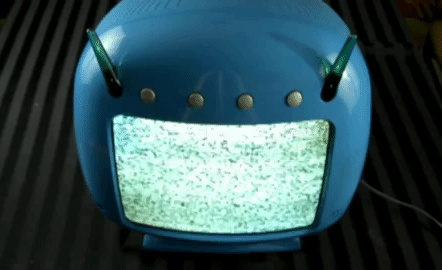
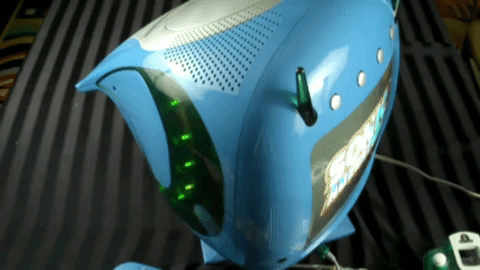
Here’s someone really enjoying a game of Zaxxon (via arcadezen)...
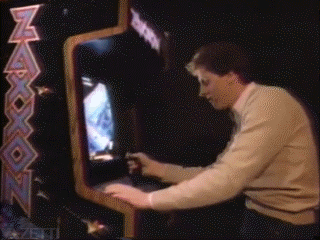
And someone... well... maybe enjoying a game of Polybius? (via dualvoidanima)
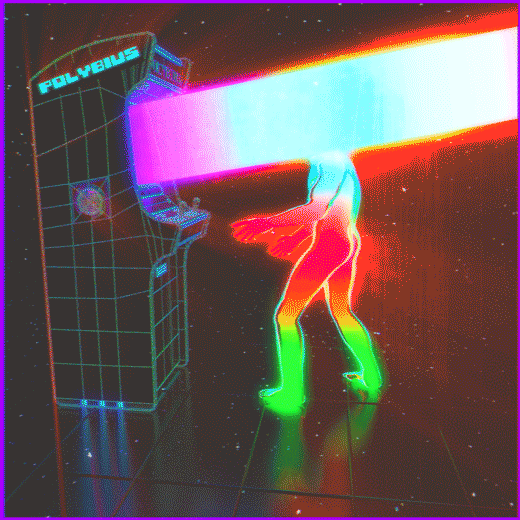
Okay, so this gif ain’t related to video games per say, yet this came up in a Tumblr that I frequent for super cool shit, plus the music video it’s from is neat, so there ya go (via mendelpalace)...
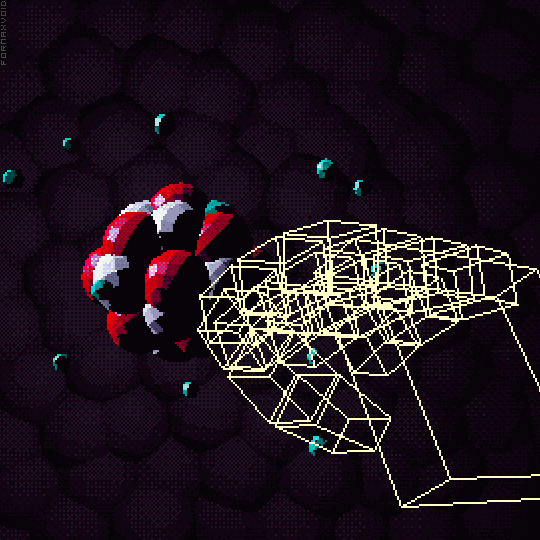
Speaking of sources for content, worlds collided with the surprise appearance of Just One Boss (which I first encountered at Death By Audio Arcade's Lo-Fi Game Night several months back) at obscurevideogames...

Worlds continued to collide with the surprise appearance of Attract Mode's Dark Souls print by Judson Cowan, in a recent article in Kotaku on the subject of Dark Souls Remastered...
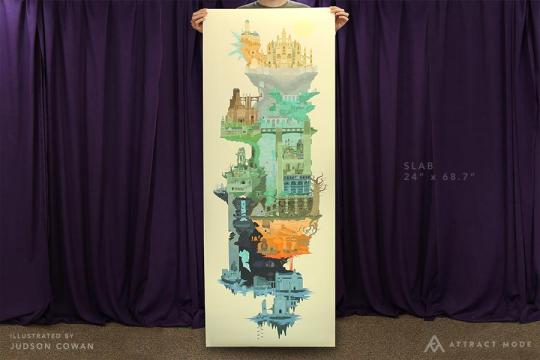
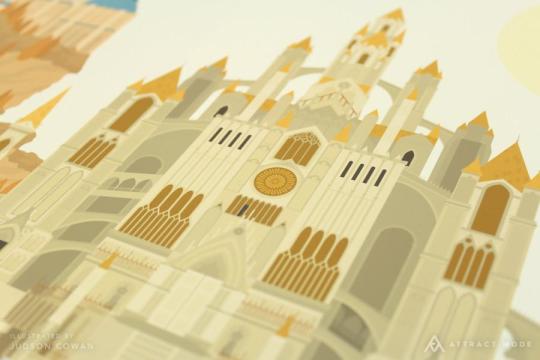
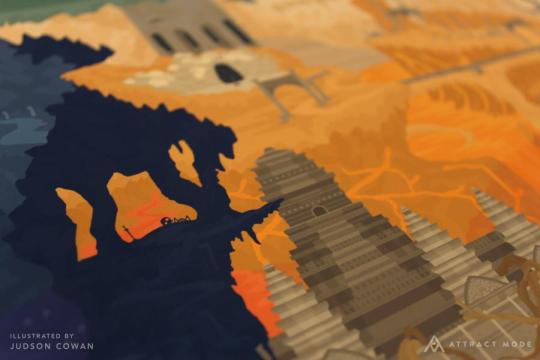
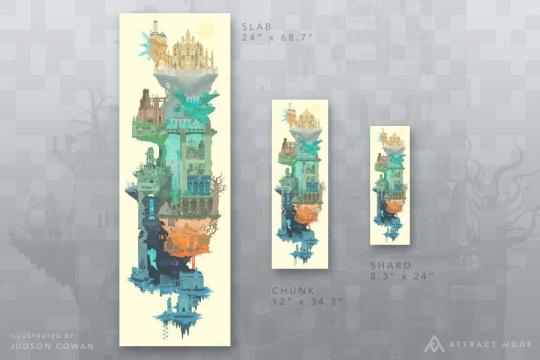
One last last thing: I’ve long considered Suzuki Bakuhatsu to be THE game that best represents the Attract Mode a e s t h e t i c & I’m super happy that the RetroPals finally got around to playing it...
youtube
33 notes
·
View notes
Text
A Case for AtGames
Hey. It’s been a while, huh?
I didn’t mean to abandon this blog: it’s just that having both an idea and time to write about that idea is pretty rare for me. This time, however, I’ve got a pretty good and relevant idea.
If you’ve been in the retro gaming community for the past few years, you’ve probably heard of AtGames. If you haven’t, they make “flashback” consoles, versions of old video game consoles with built-in games, as well as the option to put in your own cartridges (usually).
AtGames gets a lot of flack for faulty emulation, but I own four AtGames consoles, and all but one of them has provided me with sufficient retro fun. With AtGames working on Sega’s upcoming Mega Drive Mini, I decided I might as well talk about this. Today, I’m going to talk about the four flashback consoles I own and why I feel AtGames isn’t as bad as it’s cracked up to be.
Sega Genesis Classic Game Console
This is the first AtGames console I ever owned. I don’t remember how I got it, but I was pleased with it back then. Now, about two years later, let’s take a look at how it holds up.
Game Selection
Lots of great Genesis titles are included in this collection. If you’re looking for Altered Beast, Alex Kidd, Sonic, Ecco, or another classic Genesis star, they’re all here. However, no third-party titles are included (this means no NBA Jam or Mortal Kombat), but you could use the cartridge slot to play those games on this console (except those with special conditions, such as the Game Genie and Sonic 3 & Knuckles). Also, you can’t use the Sega CD or 32X with this.
The console advertises itself as having 80 classic Genesis titles. However, this isn’t exactly true. Around 40 of the games are Genesis titles, but the other 40 are mediocre stock games. If you’re only interested in Genesis games, you’ll be getting around 40 of them for $60 (roughly $1.50 per game). You could do much worse, but you could also do much better.
Emulation
The emulation is pretty solid. I never ran into any serious slowdown the original Genesis didn’t suffer from, and the aspect ratio was authentic, at least on my old CRT TV. This may be different if you’re playing on a newer TV, but at least from my experience, the console emulated its titles very well.
Sound
If you’re expecting great audio that does the Genesis’ greatest hits justice, well... prepare to be disappointed.
The sound on this console is HORRENDOUS. I can’t pinpoint exactly what the problem is, but the music is much lower-pitched and distorted. It might have something to do with the console having stereo audio, but there’s no denying the quality ruins the audio of the games.
Final Verdict
All in all, the Sega Genesis Classic Games Console isn’t too bad. Sure, the sound is completely ruined, but if you don’t mind that, you can get a decent experience. Today, I wouldn’t recommend this console, but it’s at least decent.
Atari Flashback 7
This is the second AtGames console I got. I got it for my birthday a couple of years ago, and was my first time really trying out an Atari console.
Game Selection
Unlike the Genesis Classic Console, the Atari Flashback 7 has absolutely no homebrew games. All 101 games on this console are authentic Atari 2600 titles. However, yet again, there are no third-party titles, which means no Activision titles. To make matters worse, there’s no cartridge slot on this console, which means what the console has is all you get.
However, the price for this is fairly solid: 101 games for $40 calculates to about 39 cents per game. This is great, considering that this console includes some valuable games, such as the entire Swordquest trilogy and Save Mary. If you don’t mind missing out on Pitfall and Kaboom, this console has outstanding value.
Emulation
Once again, the emulation is fairly solid. I ran into no slowdown issues, and the games ran almost exactly like how they did on the original Atari 2600. This might have something to do with the primitive nature of these titles, but as long as they run well, I’m not going to question it.
Sound
There doesn’t seem to be any distortion with the audio, at least not any that has come to my attention. Of course, these being Atari 2600 games, there’s not exactly much to hear, but the classic explosion sounds are as good as they’ve always been.
Final Verdict
The Atari Flashback 7 is a great console. You get 101 games for a great price, and the games run great. Although it could have benefited from a cartridge port, the console has tons of first-party hits from Atari’s first console. Although newer models of this console (with Activision titles, I might add) do exist, I can’t speak for those, as I don’t own them. However, I must say the Atari Flashback 7 holds up as nice as it did when I first got it
Genesis Flashback HD
AtGames recently tried again at making a great Genesis console. This time, however, they fixed most of the issues gamers had with the original, and even went above and beyond in some areas.
(IMPORTANT NOTE: This console only works with HD TVs.)
Game Selection
The game selection has greatly improved from the first Genesis Flashback. Out of the 45 games included, here’s what you’ll be getting.
45 Genesis titles
3 Mortal Kombat games
12 Master System/Game Gear games
28 homebrews
This means you’ll be getting 60 Sega titles for around $70 (around $1.16 per game). This is only a slightly better deal than the original Genesis Flashback, but at least this isn’t 50% homebrews.
Even though there is a cartridge port, you still can’t use the Sega CD, 32X, Power Base Adapter, or special cartridges with this console, but if you have one of the first three, you likely have a Genesis compatible with them, so it’s not that huge of an issue.
Emulation
The emulation is just as good as the original Genesis Flashback, so I’m not gonna go on about that again. However, I would like to note two things:
1. The (wireless) controllers have a rewind feature. This lets you go back 6 seconds each time it is used. I didn’t use it too much, but if you’re having trouble in a game, it can be useful.
2. The console allows you to put scanlines on the Genesis games. Since this console is only compatible with HD TVs, it was nice to have the option to have the games (mostly) resemble how they appeared back in the 1990′s.
Sound
Thankfully, the sound on this console is much better than the original Genesis Flashback. In fact, it’s just as great as the original Genesis. ...Not much to add,really.
Final Verdict
The Genesis Flashback HD is a great improvement over the original. With more games and better audio, it stands out as AtGames’ best Sega console to date, at least in my opinion.
Atari Flashback Portable
Last but not least, this is the latest AtGames console I got my hands on, and the only one in their portable series I have.
Game Selection
This console features 70 Atari 2600 titles, including Activision titles, Namco titles, and even a recreation of the arcade Pac-Man. I don’t blame AtGames for not using the original Atari 2600 version, since that wasn’t very good.
Also, you can use a SD card to load up Atari 2600 games downloaded online. I don’t have much use for this, but others might, so it was a nice addition.
Without counting the SD card feature, you’re getting 70 games for $60 (85 cents per game). This is slightly less value than the Flashback 7, but that’s probably to account for the portability of the system.
Emulation/Battery
The emulation is run on the same engine as the Flashback 7, so the emulation’s just as great. So instead of talking about the emulation, I wanna talk about the battery.
The system has a built-in battery, but this drains pretty quick. I remember getting around 2-3 hours of gameplay before it died. On a good note, the console comes with a charging port, and charges fairly quickly.
Sound
Same case as the Flashback 7: pretty close to the original system.
Final Verdict
The Atari Flashback Portable is a great console. It has pretty good value, and the selection of games will please most people who yearned for third-party titles with the Flashback 7.
Conclusion
Welp, that’s my four AtGames consoles I own, and my thoughts on them. You don’t have to agree with me. I know that for die-hard retro gamers, you want to get as close to the original feel as possible. However, if you don’t care about aspect ratios or scanlines, AtGames may provide just what you’re looking for.
Hopefully, with Sega’s help, AtGames’ upcoming console, the Mega Drive Mini (Japan exclusive for now) can become something great and put AtGames in a better light.
AtGames, I don’t know what’s next for you, but I hope you keep up the good work.
See you next time!
#retrogaming#gaming#video games#sega genesis#sega#atari#atari 2600#sega master system#sega game gear#atgames
5 notes
·
View notes
Photo

The Genesis of Our Lives presents: Mega Man: The Wily Wars - Mega Man 1 run!
Release date: December 31st, 1994
I've been looking for a good excuse to talk about the SEGA Channel.
These days, we don't bat an eye at the idea of getting games online - heck, for a good chunk of games, including almost all indies, that's the only way to get them. Getting games online dates as far back as the 16-bit era, and Nintendo and SEGA both had their own ways of doing it. SEGA's, though, was one that got to the States. While the Super Famicom had the Satellaview service that broadcasted game data like TV channels, we got our games over cable, via the SEGA Channel.
(pfft, I say “we” like I ever had one of those)
SEGA Channel was a subscription service, where you connected an adapter cartridge to a coaxial cable and could download games to play, the selection of which frequently changed but there were usually around fifty at any given time. Like the modern day, several selections were also retail titles, if paired down a little to meet size restrictions. A lot of content was exclusive to the Channel, and included not only full games, such as Klondike, but also some of the first instances of DLC for pre-existing games. Along with games, it also showed special promotions, as well as tips and cheats. The service was released in several other countries, but the United States version overshadowed them all with its high popularity. It continued until late June 1998, when the satellite that broadcasted the data to all the cable stations that provided the service started to fail, eventually falling out of geostationary orbit and drifting off into the cosmos.
Unfortunately, there were two main issues with the service. First was that it launched late in the Genesis' life - it didn't get an official launch until December 1994, leading to complaints regarding paying $13 a month for games on a dying console - for a point of comparison, the 32X released a month earlier. There were apparently plans for a Saturn take on it, but it never materialized. The second was that the games were saved only to RAM, and thus they could never be permanently saved in any form, vanishing into the ether when the console lost power. A large chunk of titles that were exclusive to the service thus become forever lost media when the service closed.
Thank god for Europe, as many games that were released exclusively on SEGA Channel in the States were, either instead or as well, put to cartridge there. I'll be pointing these out as they come along. Today, we'll be starting on one of the most famous SEGA Channel titles - a compiled rerelease of the first three Mega Man games, along with a whole new exclusive set of levels known as "Wily Tower."
Due to the fact that this game is literally three and a half games or so in one package, we'll be taking them on like Wreck-It Ralph: one game at a time. We'll be starting off from the very beginning.
Ready?
Tomorrow at 2 PM Pacific / 5 PM Eastern!
0 notes
Link
1994 was a big year for video games. Titles released that year on the SNES and Sega Genesis would be all time classics that are beloved to this very day. Sega had the Sega CD add on which had some hits and misses. Sega would release the short lived 32x in November of 1994 to try and keep the Genesis going just a little while long. But before I get into any of that, it is worth noting that the NES was still alive and kicking in 1994, although just barely. Most of my friends and myself has moved on to Super Nintendo by this point. My NES and the games got packed up, put in a closet, and forgotten about for a long time. Some friends of mine went so far as to throw their NES’s away, thinking it to be as antiquated as Atari and something they would never want to play again. That year, according to Wikipedia, there were 12 official releases in North America for the NES. I don’t have much to say about Mickey’s Adventures in Numberland or Mario’s Time Machine. They are both educational games for small children, focusing on math and history lessons. There is not much more to say than that. By this point, developers have figured out just what the limitations of the system were and learned how to make games for it. While not all the games I am covering today are gems, they aren’t the epicly shitty games you found earlier in the life of the NES. Many of these games could be a blind spot for some who, like myself, had moved on to other game systems and were unaware of these titles. Some of them are worth exploring if you are feeling in a retro gaming mood.
Wario’s Woods
I guess I will start at the end. Wario’s Woods was the last game released on the NES in North America. It is an addictive puzzle game with game play elements from Super Mario Bros. 2. In this game you play Toad. The story goes that Wario has taken over a portion of woods in the Mushroom Kingdom called the Peaceful Woods. Wario has cast a spell over the creatures of the woods and are making them do his bidding. It is up to Toad ,with help from a fairy named Wanda and Birdo from Super Mario 2, to defeat Wario and reclaim the Peaceful Woods. Why Toad and not Mario or Luigi or Princess Peach? I guess they were busy that day.
What happens is that Wanda makes bombs and drops them into the game area. As Toad, you lift the various creatures, matching the color of the creature to the bomb. Blow up all the creatures and move on to the next level. Birdo is in the corning doing….something. I think the official explanation is offering encouragement. You are up against a timer. If the timer runs out, Birdo runs off and Wario shows up. Wanda is also replaced by a pigeon which drops monsters into the game area. DON’T LET THE PIGEON DROP MONSTERS INTO THE GAME AREA. Wario also drops the ceiling lower on you to make matters more difficult. Eventually, Wario gets bored and goes away. Birdo comes back and now you can resume blowing up critters with bombs. Unlike many puzzle games of the time, this one has a proper ending. Get to the last level, defeat all of Wario’s critters, and win the game.
The NES was good for addictive little puzzle games, Tetris and Dr Mario being the most fondly remembered. Wario’s Woods fits right into that category. However, I feel like this game gets overlooked . Most likely because it came out so late in the life span of the system. Wario’s Woods has been released a few times and is currently on the Switch NES Online Library. If you have that service, I would encourage you to give this game a try. It’s easy to learn and hard to master. The gameplay is a lot of fun. Getting to the end was a rewarding experience for me. Wario’s Woods is a concept I think would work out quite well if they retooled it and put out a new version of the game in mobile devices. That is the home of puzzle games these days and I could see this catching on if they did it right.
Chip ‘n Dale Rescue Rangers 2
Here is a game I didn’t know existed until I started this project. Chip ‘n Dale Rescue Rangers 2 is a sequel to the 1990 game and is based on the Disney Afternoon cartoon. Developed by Capcom, it has all the elements one would expect from a Capcom side-scrolling platformer. You have a catchy 8-bit soundtrack, smooth gameplay and controls, , good looking graphics, and fun elements added to each stage. Capcom really mastered making this type of game and even with this being a late entry into the NES library, they still lived up to their reputation.
Fat Cat has escaped from prison. While that was happening, Chip, Dale, and their friends are all called away on a time bomb situation as a distraction. With Fat Cat safely on the loose, he steals the Urn of the Pharoh and plans to set the evil spirits loose. Chip, Dale, Monterrey, Gadget, and Zipper all track down Fat Cat to an amusement park to bring him to justice.
If I have any criticism of this game its that their isn’t a lot of challenge to it. It’s a lot of fun. They put some time and thought into the platforming and level design. I breezed through this game without much of an issue. You can find this game on PS4 and XBOX One in the Disney Afternoon Collection along with other fantastic games like Duck Tales, Tale Spin, and Darkwing Duck. Disney and Capcom were on a great run in the early 90’s. Watching these shows after school was a favorite part of my day back then. It is a concept that has been lost over time and that is just the way it is. After school programming was so much fun back then. Get home, catch the last part of GWF on ESPN, then it was Duck Tales, Rescue Rangers, then change the channel to PBS for Where in the World is Carmen Sandiego, wrap it up with Tale Spin, finally it was time to go outside and play for a while before dinner and homework. Playing these games certainly is a part of those nostalgic feelings. I am curious how the younger people would feel about these games. To me, they hold up as some of the best from the NES library.
Mega Man 6
Speaking of Capcom, Mega Man would see it’s last entry on the NES in 1994, released in March of that year. Like the aforementioned Chip N Dale Rescue Rangers 2 , the game features a catchy soundtrack, fun platforming elements, smooth controls, and colorful graphics. If you liked the other Mega Man games, then you should like this one because they stayed fairly close to the formula. There are eight robot masters each with their own themed stages. Beat the robot master,gain a special ability move on to the next. Once all the robot masters are defeated, storm the castle. Complete each level of the castle, fight the last boss and win the game.
With the world at relative peace since Mega Man 5, the people decide to have an robot fighting tournament hosted by the mysterious Mr. X. During this episode of Robot Jox, Mr. X takes control of the top eight robots and attempts to take over the world. Mr. X explains he was behind Dr. Wily’s plots all along. Dr Light sends Mega Man into action to take down the rogue robot masters. The eight robot masters are Centaur Man, Blizzard Man, Flame Man, Knight Man, Plant Man, Tomahawk Man, Wind Man, and Yamato Man. Once they are defeated, Mega Man goes after Mr. X directly. You will never guess who Mr. X really is.
The focus of this game seems to lean heavily on the level design. Each of the robot masters levels have some unique challenges consistent with each of their powers. Wind Man’s level has you riding over pit traps and spikes with strategically placed fans. Flame Man’s level has rivers of oil that you don’t want to be in when they get set on fire. This time Rush combines with Mega Man to give him a Jet Pack and Power Punch. The robot masters aren’t terribly difficult this time around. In fact, they are painfully easy to beat. For as difficult as Mega Man 1 was, it’s kind of ridiculous how Mega Man 6 is so easy. The thing I will remember about this game is the contest in Nintendo Power where people could enter their ideas of Robot Master. I submitted an entry and got a pleasant form level in return. I was just happy to have had chance to enter my ideas.
It is fitting that the NES would go out with a Mega Man game in it’s last year. This style of game was defining for the system. The first six Mega Man games were so popular that the 8 bit style would be brought back years later for Mega Man 9 and Mega Man 10. Mega Man 6 has been rereleased in several compilations, such as the Mega Man Anniversary Collection on the original X Box and PS2 as well as the Mega Man Legacy Collection Vol. 1 on the Nintendo Switch, 3DS, PlayStation 4, and X Box One. Mega Man would have a rough transition going forward. The SNES I will always associate with the Mega Man X series. It was the home of Mega Man 7 but somehow it just didn’t feel right. The less said about Mega Man 8 on the PS1, the better. Mega Man 6 will probably be remembered as one of the best late entries into the NES library and a bit of a curiosity as most people had moved on to the 16 bit systems by the time it was released.
The Flintstones: Surprise at Dinosaur Peak.
If you happened to buy this game in a bargain bin at Blockbuster back in the day and kept it in your closet all these years, I have great news for you. The Flintstones: Surprise at Dinosaur Peak is one of the rarest games in the NES library. As of press time, a copy of this game sells for anywhere from $800 to $2000. There are apparently less than 10,000 copies of this game floating around. It is believed that Flintstones: Surprise at Dinosaur Peak was an exclusive to Blockbuster in 1994 although there is some dispute to that. Chances are, the only way one played this game back then was to get it from a rental location.
The game is somewhat of a sequel to The Flintstones: The Rescue of Dino and Hoppy also developed by Taito. In Surprise at Dinosaur Peak, you switch back and forth between Fred and Barney. They each have different abilities that help one navigate through each stage. The idea is that Pebbles and Bam Bam are stuck on a lava flow from an erupting volcano. The only way to save them is to walk all the way around the volcano to the other side. In an odd scene at the beginning, The Great Gazoo appears to Fred to tell him that he can’t help because teleportation is behind his abilities. (?) No matter. You side-scroll and platform through the various levels and there are bonus stages with cave man hockey and basketball.
Overall, its a good looking game that plays pretty well. They put some thought into each level as well as the cut scenes. Given how few of these carts were made, it really is impressive just how much care and detail they put into the game. It’s not terribly difficult. You can breeze through it without too much of a hassle. I have to think this game would have done better if it had been released earlier in the life of the NES. Movie and TV show license games were notoriously bad. I had the misfortune of owning Back to the Future. A good friend in my neighborhood ended up with Fester’s Quest. The Flintstones: Surprise at Dinosaur Peak is a drastic improvement from those games. The graphics and game play are far superior to much of the early NES library. Fans of The Flintstones will appreciate the references that the game adds in. It is a genuine Flintstones experience. However, if you want to play this game as a curiosity, I can’t recommend paying up to $800 and beyond for a copy. This a fine game but not worth that much money unless you plan on becoming a serious collector of NES games.
Bonk’s Adventure
There is some similarity between Bonk’s Adventure and the game just discussed The Flintstones: Surprise at Dinosaur Peak. They are both fairly expensive games that were released late in the lifespan of the NES and have a prehistoric theme. Bonk is best remembered as the mascot for the short lived Turbo Grafx 16 consoul. While the NES version doesn’t look as good as the Turbo Grafx one, it is a really good looking game for an 8-bit system. The game play is very similar to other side-scrolling platformers. The goal is to go from level to level through this prehistoric world trying to save Princess Za from King Drool. A lot of video game plots back then were inspired by Super Mario Bros. Bonk walks through the world with nothing but a headbutt attack. You have a volcano level, water level, ice level,your typical affair for this type of game. Aside from the rarity, what makes this game remarkable is how faithfully they were able to port a 16-bit game onto an 8-bit console. Much like the last game we discussed, it would have been more fondly remembered if it had been released earlier in the NES’s life. Bonk’s Adventure is better than much of what we were stuck playing when the NES was at it’s peak. Bonk’s Adventure was rereleased on the WII and WIIU Virtual Console if you would like to play it without having to pay the obscene price for the actual cart. It is a must have for serious collectors though.
Alfred Chicken
Alfred is a chicken who flaps and pecks his way through five levels popping balloons along the way. I don’t know that there is a story to the game beyond that. Alfred Chicken is a platformer with puzzle elements added in for fun. In each level you have to find green balloons. Pop the balloons and float to the next level. The bulk of the game is climbing up platforms and reasoning out where balloons may be. Unlike many of the games previously discussed, the graphics aren’t all that good looking. It looks like a colorized version of a Gameboy game. The music is also quite annoying and very repetitive. What it lacks in visuals and sound, Alfred Chicken makes up for in gameplay. The levels are a lot of fun to work your way through if your a fan of platforming. The best I can describe it would be like a combination between Krusty’s Fun House and Kid Icarus. There are a few boss fights at the end of each level which resemble a shooter like Life Force or UN Squadrons. That kind of variety is appreciated. Alfred Chicken got a remake for the PS1 in 2002. That game looks a lot better and has more levels to it. I would probably recommend finding that game rather than this once, give how much some of these later years NES game cost. Alfred Chicken is a fun game to pick up and play but they could have done more with the concept and flushed it out better. My hope is that they did that with the remake and made a better gaming experience. The NES version feels like the playable Beta test for a much better game.
Teenage Mutant Ninja Turtles Tournament Fighters
At this point, I am understanding some of the complaints that the younger generation has about the NES. I have discussed a lot of platformers and puzzle games. If you cut your teeth on these games, then they are great but there isn’t a lot of variety on the system. The NES was a bit too late to cash in on the popularity of fighting games in the mid 90’s, lead by Mortal Kombat and Street Fighter II. Neither of those games would be ported to the NES, although oddly they did make their way to the Sega Master System. If you have played those games or own them, then I tip my hat to you. There weren’t many games on the NES that could fit into the fighting game genre. So imagine my surprise when I found Teenage Mutant Ninja Turtles Tournament Fighters. If you have this one sitting in the back of your closet, I have great news for you. It is worth quite a bit of money.
The idea of the game is that you pick from one of six characters. Included are the four Turtles, Casey Jones, and Hothead, apparently a character from the comics. You fight each of the Ninja Turtles then go on to face Casey Jones, Hothead, and a final battle with Shredder to beat the game. Shredder is absurdly difficult so there is a great sense of accomplishment when you manage to beat this one. Sadly, in this version of the game, the Ninja Turtles aren’t given their weapons. There is a little bit of move variety from Turtle to Turtle, mostly inspired by Street Fighter II. Leo does a Tornado Kick similar to Ryu and Raph does a Torpedo Launch similar to E.Honda, you get the idea. In the context of the game, there seems to be no reason the Turtles are fighting each other. The pregame cut scene only tells us that Shredder has challenged the Turtles to a fight in the streets of Manhattan. It doesn’t explain why you have to fight all your friends before facing Shredder. Teenage Mutant Ninja Turtle Tournament Fighter is your run of the mill fighting game. Win the best two out of three and move on to the next fight. The game can get a bit glitchy. Graphically, they are really pushing the limits of what the NES could do. The NES controller really wasn’t made for this type of game. The controls don’t feel smooth at all. If you force yourself to get used to it, the game is playable but it feels awkward. By 1994, The Ninja Turtles and the NES were waning in popularity. There are such better examples of fighting games on the SNES and Genesis, including superior versions of this game. It’s no surprise that this was overlooked. Still, Konomi put a lot of work into a game that few people played. The music is excellent and it looks pretty good. The NES just wasn’t made for this type of game.
Zoda’s Revenge: Star Tropics II.
Star Tropics II can be best summed up as more of Star Tropics. This time though your main character Mike Jones (Who?) and his uncle, Dr. J, are flung through history to collect blocks called Tetrads. You play through nine chapters, each one a different point in time of human history. You meet characters like Cleopatra and Sherlock Holmes, who help you along the way. Like the first one, they combine RPG elements with dungeon crawling, puzzle solving, and adventure aspects. Play through the dungeon, collect the Tetrad, go back and talk to the villagers, proceed to the next chapter. I am making it sound simple but this is an incredibly fun and satisfying game. They improved the controls from the first one, now letting you jump and move in a few different directions and not just hopscotching along. Other than that, they didn’t change much from the first. The game still has a quirky sense of humor. The graphics, enemy design, level design, and gameplay all mirror the first one. I don’t mean to be disparaging when I say it’s more of the same because it’s more of a really great game. This has been rereleased a few different times over the years. Although it is not yet on the Switches NES Library, I expect it to appear before too long. Of all the NES games to come out in 1994, this is the one I recommend most.
So that is the NES in 1994. I hope that I have given you some ideas for different games to play that you may have missed when they were first released. Many of these games are worth checking out. Nostalgia for the NES is alive and well today. For many of us, this was our first game console. When you are out and about, you see t-shirts with the classic characters on them in all their 8-bit glory. I have a pair of socks with NES controllers on them. Merchandising the warm feelings for this system to Gen Xer’s and Millinials is going strong and can be found at just about any retail outlet. Something about the NES will always be special to us.The warm, fuzzy, 8-bit memories never really go away although by 1994, we had mostly moved on to bigger and better things. As will I as I continue to celebrate all that was 1994 as we approach the New Year.
1 note
·
View note
Text
Looks Like Retro-Bit Is Reanimating Sega's Switch-Like Handheld, The Wanderer - Nintendo Life
Retro-Bit-- the business behind a series of clone systems and repackaged classic games-- has actually already validated that it is working with Sega to produce a series of officially-licenced accessories for the Sega Genesis/ Mega Drive and Sega Saturn. The business is revealing these items off at CES right now, and they look so close to the genuine thing it's in fact excellent( whether they feel as great is something we'll be investigating when we get our hands on them). However, Retro-Bit has something else at CES which is much more intriguing-- it's displaying a model of what seems a born-again Sega Wanderer. If you didn't understand currently, the Nomad was Sega's ill-fated effort to turn the Mega Drive into a portable system-- if was type of like the Switch prior to the Change existed. It ran all Mega Drive( well, Genesis)games and might be linked to the TELEVISION for the full home console experience. While it was remarkable for the time, it consumed batteries like no one's service and didn't really find the audience it possibly deserved.Fast forward to today day, and modern-day rechargeable batteries and LCD screens should make this a more feasible proposal, and the rumoured price point of around$80 would also make it quite appealing. It's worth noting that a lot of speculative hardware gets displayed at CES, and seeing as both of the units shown do not have Sega's branding, it could be that these units have yet to meet the business's approval. We already have the
Hyperkin Supa Boy, so it would be excellent to have a' new '( and more importantly, decent )Mega Drive portable. Sega fans have actually had to withstand some real stinkers in the past, with the decade-old GenMobile being the last notable system that really enabled you to utilize original carts on the move.Subscribe to Nintendo Life on YouTube This is relatively cool. I do like the idea. But I am getting ill of all
the single gadget clone hardware. I don't desire a closet complete of these things.But picture this, a licensed gadget, like this, that can work as a portable
or connect to a contemporary TELEVISION, that can play roms from every dedicated Sega system, Master System, Mega Drive/Gensis, GameGear CD, 32X, Saturn and Dreamcast. with interchangable accessories can play and conserve to the device old initial copies of games (each offered individually), and an internet connection with a main digital shop for games from those systems. That is what I wish to see from Sega.From Nintendo, what I desire is that on the Switch.(minus the attachments for old cartridges, considering that I understand that 'd never work with the Change's kind factor)Second to that, a dedicated gadget for retro material from Nintendo like I described above, for everything pre-Nintendo Wii. That sort of device might work.And I want these devices to not just play the original games, however to be able to conserve them to the device. To be able to better protect these 20-40 years of age game cartridges.And yes, I know there would be licensing issues and all sorts of other problems and what I explain probably is
n't practical. Gosh darn it, I can still dream!
0 notes
Text
Night Trap Research Report
Historical Context
Night Trap was one of two full games (the other being Sewer Shark) developed for a project codenamed the Hasbro NEMO (Never Ever Mention Outside).
Hasbro thought Nintendo’s extremely successful NES would cannibalize their toy market and scouted for a video game project to compete.
The NEMO project began around 1986 and would have been released in 1989 under the name Hasbro Control-Vision, except it was cancelled two months before because executives thought its $299 price tag wouldn’t be competitive against the NES (which seems to have cost only $79 at the time).
They were probably right, but if I was Hasbro I wouldn’t have bothered and would have just made NES games instead.
The Control-Vision was envisioned as the first console capable of streaming video and would have used VHS tapes. The VHS tapes could hold several video streams running simultaneously alongside game code. The game code’s primary function would be to switch video streams. This console would have seen little use outside of FMV titles.
Sewer Shark cost $3 million and Night Trap cost $1.5 million. Both were shot in 1987 but were placed into storage for several years after the Control-Vision was cancelled. Tom Zito, main developer of the Control-Vision, founded Digital Pictures and purchased the video game rights from Hasbro so that they could be released on the then-new Sega CD.
The Turbografx-16 was actually the first console to utilize CD for video games. It was released in Japan in 1987 (known there as the PC-Engine) and America in 1989 where it failed to break the US market. It was technically capable of FMV, but was seldom used for such. It seems FMV was largely an American concept (Hollywood I suppose).
The Sega CD (known as Mega-CD outside of America) was the first console to popularize CD-based games in America, and therefore the first that would be viable for Digital Pictures’ backlog.
Tom Zito/Digital Pictures fervently believed in their FMV technology as the future of video gaming. There’s an interview with Tom Zito from October 1995 in Next Generation magazine issue #3 dated March 1995 that really demonstrates his viewpoint at the time (which would turn out to be dead wrong). Archive.org has a digital copy of this magazine which can be viewed here: https://archive.org/details/nextgen-issue-003 (page 110 of the PDF).
Night Trap was released on October 15, 1992, five years after its filming. It in fact shares the same release date as Sewer Shark (and also the Make My Video series, though I don’t know when they were filmed).
Kickstarter
https://kickstarter.com/projects/1018579240/night-trap-revamped
In 2014, ex-Digital Pictures founders attempted to kickstart an HD re-release of Night Trap on modern consoles. They claim that Night Trap was shot on 35mm film, so it could quite easily be remastered to at least HD. Unfortunately the Kickstarter was poorly promoted and suffered several problems that made backers suspicious, so it was ultimately unsuccessful.
Controversy
In 1993, Night Trap and Mortal Kombat (both games on Sega consoles; the SNES version of Mortal Kombat was heavily censored) were the center of a Congressional hearing concerning mature/violent content in video games. Most of the Night Trap controversy centered around “the bathroom scene” (roughly 13 minutes into the game) where Augers capture a character and kill her if you don’t intervene and save her. Senators appear to confuse her death as the game’s objective.
The concern was largely based on the fact that throughout the 80s, video games were predominantly played by children. Senators disregard the idea that by 1993, those children could be late teens or even adults, and also the fact that the average age of a Sega CD owner was 22.
Nintendo appears to use the controversy as an opportunity to disparage Sega and position themselves as the more family friendly of the two. A reporter claims that Nintendo was often the one providing media with footage of Night Trap. Nintendo would later allow Mortal Kombat 2 to be released on the SNES uncensored, so I guess it didn’t work but then again Sega barely exists anymore so who’s the real winner
Digital Pictures remains butthurt about this to this day, promising in their Kickstarter that their HD remake would never appear on a Nintendo console. Grow up guys, even Sega got over that.
References: https://www.youtube.com/watch?v=eJVnL484jbk https://www.youtube.com/watch?v=TFkJw_hVhyI
Disc Contents
For my video I wanted to insert the game’s plot cutscenes but had trouble finding them unaltered. There was an “all cutscenes” collection from 10 years ago on YouTube but they were low quality. There were several “movie edits” that processed the cutscenes for upscaling and cut them together to resemble a film more closely but I didn’t want to use those. I just wanted the game to speak for itself.
While I used a longplay for some clips, longplays of Night Trap don’t contain every cutscene because the nature of the game requires you to leave the plot to catch Augers, especially during a perfect playthrough. Rather than play the game several times to capture the plot, I chose to extract the cutscenes directly from the disc - made possible by an existing tool called SGA Conversion and Analysis Tool (SCAT). This has the added benefit of excluding the “miss” sound, which is played separately by the game (old Night Trap movie edits that captured from the game were forced to retain them prior to the release of this tool).
I used the 32X port of Night Trap to extract cutscenes from, but recorded the Sega CD port for gameplay footage because it’s by far the most recognizable version. It seems the 3DO port’s video is considered the highest quality (even higher than the DOS port), but also the frame rate is lower (3DO is 12fps, 32X is 15). The tool worked pretty flawlessly, and claims to work on all Digital Pictures games for all platforms. The tool transcodes to uncompressed RGB24 video and PCM audio which is good but a little overkill. Its interface is also pretty terrible, but the VB.NET source code is provided which is nice.
There were 119 SGA files that I needed to convert so I could edit them. SCAT featured no bulk import/export feature so I opted to modify the source code to include one. In actuality it probably would have been faster to just transcode each file individually, but hey if you ever need a project to bulk transcode SGA to AVI, it can be downloaded here:
https://drive.google.com/open?id=0B7tmoAnShDodYXJUU2xQTWVYc2s
As a random sidenote, it’s fascinating to see the video palette working in SCAT. The Sega CD could only support 64 colours on screen at a time, so every couple frames, the palette changes to better accommodate whatever’s on screen at that time. While the FMV produced by the console is infamously crude, there’s a tremendous amount of intelligence in getting it to look as good as it does.
0 notes
Text
17 Indie Comics Video Games You Forgot Existed
While the heroes and villains of Marvel Comics and DC Comics have starred in video games for decades, characters from other publishers have also made the jump into the realm of video games. For publishers without instantly recognizable superheroes, a video game can introduce and help define their characters to a wide new audience.
RELATED: 15 Marvel Games You Definitely Forgot
Now, CBR is taking a look back at some of the most forgotten video games based on independent comics. For this list, we’ll be focusing on characters and concepts from publishers like Dark Horse and Image Comics. While some of these characters debuted first in other media or are now owned by media conglomerates, the games we’re looking at have direct roots in the world of comics.
TEENAGE MUTANT NINJA TURTLES: TOURNAMENT FIGHTERS
While the Teenage Mutant Ninja Turtles’ most memorable video game appearance came in Konami’s beloved 1989 arcade brawler, the Turtles have appeared in almost two dozen other titles. Most of those games feature the Turtles working together to defeat Shredder and the Foot Clan, but 1993’s “Teenage Mutant Ninja Turtles: Tournament Fighters” pit the Turtles against each other in one-on-one combat.
While the specifics of the Konami fighting game varied between platforms, every version featured the Turtles and an eclectic roster of characters that drew from a variety of sources. The Nintendo Entrainment System version is one of the console’s final titles and featured an original character named Hothead. The Super Nintendo game has a wider cast that includes minor characters from the Turtles’ Archie Comics and Mirage Studios series, as well as an original character named Aska. The Sega Genesis version of the game includes the only playable version of April O’Neil in the series and has an original character named Sisyphus. Despite their differences, all of the games were moderately well-reviewed.
THE CROW: CITY OF ANGELS
With four movies and a television series, James O’Barr’s “The Crow” was one of the more visible comic-based franchises of the mid-1990s. After the success of “The Crow” in 1994, Miramax Films and Dimension Films made a big promotional push for the franchise’s second film, “The Crow: City of Angels” in 1996. While that movie was only a mild success, Acclaim released “The Crow: City of Angels” for the PC, Sega Saturn and Sony PlayStation in 1997. Like the movie, the 3D brawler follows Ashe Corven, a murdered mechanic who comes back to life in order to bring he and his son’s killers to justice.
Upon release, the game was poorly-received and has a reputation as one of the worst video games of the era. In an effort to capture the franchise’s gothic tone, the game largely takes place in poorly-lit areas that turn the screen into a dark mess of pixels. Reviewers savaged the game at the time, citing an unnatural control scheme, unforgiving enemies and a camera that regularly left the action out of view.
ALIEN VS. PREDATOR
While “Alien” and “Predator” had established their title creatures as landmark movie villains by the late 1980s, the monsters didn’t cross paths until February 1990’s “Dark Horse Presents” #36. Although “Predator 2” featured an Alien easter egg later that same year, the initial comic story, by Randy Stradley, Chris Warner and Phil Norwood, became the basis for a never-produced movie. While the comic-based script for that movie was eventually discarded, it was still the loose basis for Capcom’s 1994 arcade game “Aliens Vs. Predator.”
Filled with the kind of frantic, nonstop action that would later define the “Marvel vs Capcom” series, the three-player game became a popular staple of arcades. In the game, players battle endless hordes of Aliens as one of two cybernetically enhanced human soldiers or two Predators. Although plans to release the 2D brawler on the Sega 32x were scrubbed, the well-reviewed arcade game has been called the best interactive meeting between the two franchises.
SCUD: THE DISPOSABLE ASSASSIN
Rob Schrab’s cult series “Scud: The Disposable Assassin” was one of the more noteworthy independent comics of the mid-1990s. Published through Schrab’s Fireman Press and later Image, the series follows Scud, a robotic assassin who was purchased out of a vending machine. After realizing that he’s set to explode after completing his mission, he tries to keep his target alive and takes on a series of bizarre freelance gigs. Starting in 1994, Schrab’s title followed Scud for 20 issues of bizarre adventures before taking a decade-long hiatus and concluding in 2004. Shortly before the hiatus began, Scud starred in SegaSoft’s “Scud: The Disposable Assassin” on the Saturn in 1997.
In the game, players can take control of Scud and his partner Drywall in a side-scrolling action platformer. While this makes up most of the gameplay, the game also has an on-rail first-person shooting segment that can be played with a light gun. The game’s graphics and fidelity to the comic book received some praise, but reviews were largely lukewarm, with most calling it an unremarkable release. More recently, Scud made a few cameos in “Community” thanks to Schrab and former Scud spin-off series writer Dan Harmon.
SPAWN: THE ETERNAL
Twenty years ago, Spawn was at the peak of his cultural prominence. In 1997, Spawn starred in a highly-regarded HBO cartoon, a successful feature film and a chart-topping Image comic book. After an underrated SNES game in 1995, Todd McFarlane’s signature creation made his 3D debut on the PlayStation with “Spawn: The Eternal” in 1997. This Sony Computer Entertainment production pits various versions of Spawn from across the ages against the evil forces of Malebolgia.
“Spawn: The Eternal” is generally considered one of the PlayStation’s worst titles. Contemporary review criticized the release for poor controls and grainy, almost-incomprehensible graphics. Reviewers also took issue with the game’s two modes. While the game’s movement focuses on third-person exploration, every enemy encounter takes place in a side-view fighting game style mode with a different set of controls. The transitions between these two modes can be clunky, which is only highlighted by the disappearance of Spawn’s cape as the modes change.
DANGER GIRL
Although its most popular days have passed, Danger Girl has proven itself to be a remarkably resilient franchise over the past 20 years. Originally created by J. Scott Campbell, Andy Hartnell and Alex Garner for Image’s Cliffhanger! imprint in 1998, “Danger Girl” follows a group of female secret agents led by Abbey Chase as they fight the would-be world-conqueror Major Maxim and his Hammer Empire in stories that mix light espionage with high adventure. In 2000, THQ and n-Space brought the series to the PlayStation with “Danger Girl.”
In the third-person shooter, players can take control of Chase, Sydney Savage and original character JC in a story loosely based on the comic’s seven-issue debut miniseries. While the title’s run-and-gun gameplay owes more than a little to the contemporary hit “Tomb Raider,” the character designs capture Campbell’s cartoony art style fairly well. While the game’s light tone garnered some praise, reviews were tepid, with most pointing to the title’s bug-filled controls and flawed gameplay mechanics.
CHAKAN: THE FOREVER MAN
Even though the immortal warrior Chakan never really broke out of the indie comics scene, he still warranted a starring role in a somewhat infamous game. Created by Robert A. Kraus in the late 1980s, “Chakan: The Forever Man” follows a warrior and sorcerer who is cursed by Death to live eternally and exterminate all of the evil in the universe with his trademark twin swords. While Kraus continues to self-publish works featuring the character today, Chakan came to life in “Chakan: The Forever Man” for the Sega Genesis and the portable Sega Game Gear in 1992.
In the Extended Play Productions game, players control Chakan in an atmospheric 2D side-scrolling platformer as he tries to free himself from Death’s curse. Like “Mega Man,” the game features four levels that could be completed in any order. While contemporary reviews were mostly positive, the game has a reputation for being one of the most difficult games of all time and still has a small cult following.
ROBOCOP VS. THE TERMINATOR
After the success of “Alien Vs. Predator,” Dark Horse paired another two conceptually compatible movie franchises together in the miniseries “RoboCop Vs. The Terminator.” With an ingenious story by Frank Miller and dynamite art by Walt Simonson, the miniseries is something of an underrated gem today. In the comic, RoboCop is recast as a key component in the development of the Terminators and leads an effort against the machines in a post-apocalyptic future. In 1993 and 1994, the battle broke out of the comics’ page on onto game consoles with “RoboCop Vs. The Terminator.”
While the SNES and Genesis versions differ, both were positively-reviewed action platformers and are fondly remembered today. Interplay Entertainment’s SNES version of the game leaned into its comic influence, with character sprites that looked like Simonson’s art and cut scenes driven by word balloons and panels. It also featured a graphically ambitious first-person stage where players fought a horde of Terminators in the future. Virgin Interactive’s Genesis game featured more realistic character sprites and an incredible amount of blood.
XIII
While it’s largely unknown to American audiences, the Franco-Belgian graphic novel series “XIII” has thrilled international audiences with its mix of intrigue and high-stakes conspiracy for decades. Created by Jean van Hamme and William Vance in 1984, the comic follows an amnesiac man called “XIII” as he tries to stop a mysterious organization called the XX from overthrowing the United States government while discovering his true identity. In 2003, Ubisoft adapted the first arc of the series as a first-person shooter released across multiple platforms.
Upon release, “XIII” garnered a considerable amount of praise for its cel-shaded graphics. With cut-in panels and visual onomatopoeias, the game reproduces the familiar comic book techniques in a way that still feels inventive today. Beyond the game’s art direction, “XIII’s” soundtrack, story and voice acting also received accolades. Despite all this, the title received mixed reviews, due to action and stealth-based gameplay that seemed lackluster compared to that era’s other first-person shooters.
HELLBOY: DOGS OF THE NIGHT
While Hellboy got his big break with his 2004 feature film, his first video game came years earlier with Cryo Studios’ “Hellboy: Dogs of the Night” for the PC. Cryo was initially founded as Dark Horse Interactive and worked out of Dark Horse Comics’ office. After the French game developer Cryo Interactive bought the company in 1999, Dark Horse Interactive became Cryo Studios, but retained the license to make Dark Horse games. After four years in development, the game, starring Mike Mignola’s signature creation, was released to little fanfare in 2000, and Cryos folded before a PlayStation port of the game could be finished.
In the third-person survival horror game, players can control Hellboy as he and the B.P.R.D. try to keep someone in an insane asylum from opening a portal to another world. When the first Hellboy movie was released, Dreamcatcher interactive finished the abandoned PlayStation port and released the game as “Hellboy: Asylum Seeker,” one of the system’s last titles. This release of the game was poorly-received, largely due to outdated graphics and an ineffective combat system.
ARMORINES: PROJECT S.W.A.R.M.
In 1994, Acclaim Entertainment purchased Valiant Comics. After a few years, Acclaim rebooted the Valiant line before shifting their attention towards making games based on Valiant properties. While their “Turok: Dinosaur Hunter” series became a massive commercial and critical success, their other games didn’t fare so well. One of these titles was based on the minor Valiant title “Armorines,” which features power suit-wearing soldiers who take on secret missions for the United States government.
Released on the Nintendo 64 and the PlayStation in 2000, “Armorines: Project S.W.A.R.M.” follows one of two Armorines as they try to protect the Earth from an imminent invasion of giant Spider-Aliens. While the concept is true to the comic, the in-game execution owes a clear debt to “Starship Troopers.” In an unusual twist, the game also featured a “pen and ink mode,” where the graphic overlays were removed and the action would take place as black lines on a white background. While the Nintendo 64 version of the game received mixed reviews, the PlayStation port was poorly-received due to its unforgiving control scheme and high level of difficulty.
SHADOW MAN
Other than “Turok: Dinosaur Hunter,” the only Valiant property to appear in multiple Acclaim games was Shadowman. While Shadowman started out as a fairly straightforward supernatural hero, the Acclaim reboot sent the character in a more horror-focused direction. In 1999, this version of the character came to consoles in “Shadow Man.” In the third-person action game, players controlled the voodoo-powered hero as he tried to protect the Earth from a land of the dead called the Deadside. While the PlayStation port of the game received mixed reviews, the Nintendo 64 and Sega Dreamcast versions received considerable praise, especially for the title’s dark tone.
In 2002, a sequel entitled “Shadow Man: 2econd Coming” was released for the PlayStation 2. While this sequel didn’t have the commercial success of its predecessor, it received moderately positive reviews that praised its moody atmosphere, improved graphics and increased emphasis on action. Despite this, the game’s most notable moment came with a proposed-but-abandoned advertising campaign centered on buying ad space on real tombstones.
TELLTALE GAMES’ BONE
While Telltale Games’ “Batman: The Telltale Series” was one of the most compelling superhero games of 2016, the company’s first adventure game came with a two-episode adaption of Jeff Smith’s landmark series, “Bone.” Starting in 1994, Smith self-published his cartoon epic, defined by a charming mixture of comedy and high fantasy through his Cartoon Books imprint. In 2005, Telltale released “Bone: Out from Boneville” for the PC. The title allowed players to take control of Fone Bone and Phoney Bone in an adventure that directly adapts the comic’s first story arc.
While that title received mixed reviews, its follow-up, “Bone: The Great Cow Race” was more warmly received. In this third-person title, players control all three Bone cousins, including Smiley Bone, in a faithful adaption of the title’s second story arc. When it was released in 2006, CBR called it a romp that was reminiscent of the point-and-click adventure games of the early 1990s. Despite the charm of those games, plans for an adaptation of the comic’s third arc, “Eyes of the Storm,” remain unfulfilled.
THE RED STAR
Although it’s not as prominent today, “The Red Star” was one of the more well-regarded independent comics of the early 2000s and earned its creator Christian Gossett an Eisner Award nomination for Best Penciller in 2001. Starting in 2000, this Image series follows a world that combines Soviet military stylings with Russian folklore and magic. With a distinctive look that mixes Gossett’s penciled art with rendered 3D models, the world of “The Red Star” was brought to life in a 2007 PlayStation 2 release by XS games.
Originally developed by Acclaim, demos and review copies of “The Red Star” for the Xbox and the PlayStation 2 were sent out in 2004. After Acclaim’s bankruptcy, plans for the game’s release were delayed; that is, until XS Games picked up the title a few years later. In the game, players fought on behalf of the Red Star in an adventure that’s a unique combination of role-playing elements, brawling and third-person shooting. Despite its delayed release, the game received mostly positive reviews that praised its varied gameplay.
WILDC.A.T.S
While the WildC.A.T.s have been owned by DC Comics since the late 1990s, the WildStorm Productions heroes were some of the first Image Comics characters to become an established multimedia franchise. Created by Jim Lee and Brandon Choi in 1992, the “Covert Action Team” consisted of human and alien heroes who protect the Earth from the evil Daemonites. In conjunction with their short-lived animated series, Beam Software and Playmates Interactive brought “Jim Lee’s WildC.A.T.s” to the SNES in 1995.
In the game, players could play as the cyborg leader Spartan, the clawed Warblade or the super-strong Maul in a 2D side-scrolling brawler. Each of these characters is locked to a particular set of stages that make good use of their distinct abilities, but the absence of relatively more popular characters like Grifter and Zealot is somewhat puzzling. Although the title was released late in the SNES’ life cycle, it received moderately positive reviews that called it slightly above average for the era.
SPAWN: IN THE DEMON’S HAND
While “Spawn: The Eternal” was partially defined by its plodding pace, “Spawn: In the Demon’s Hand” features non-stop propulsive action. Originally developed for the arcade by Capcom, the title was later released for the Dreamcast in 2000. In this game, one-to-four players could control one of 37 Spawn characters in this fast-paced third-person arena shooter. With a roster that included multiple versions of Spawn, villains like Overtkill and Angela-esque angels, the game displays a surprisingly deep knowledge of Todd McFarlane’s landmark Image series. While some characters could only shoot guns, the fighting styles of others were varied to include super-powers and hand-to-hand combat.
With the game’s constant flashing neon text, endless gunplay and blaring rock soundtrack, it’s a total assault on the senses… in the best way possible. Although the home release of “Demon’s Hand” received some criticism for confusing controls, the title is generally considered one of Spawn’s best video game appearances.
BUCKY O’HARE
In the wake of the Teenage Mutant Ninja Turtles’ success, franchises built around anthropomorphized animals were common in the early 1990s. Before jumping into the worlds of action figures and Saturday morning cartoons, the green space rabbit Bucky O’Hare started fighting an intergalactic war in books published by Neal Adams’ Continuity Comics. Created by Larry Hama and Michael Golden in 1984, the series follows Bucky and his crew of mammal-based creatures in their fight against the evil Toad Empire. In 1992, Konami released two games based on the short-lived multimedia franchise.
In the NES game, simply called “Bucky O’Hare,” players could control Bucky as he freed the members of his crew in a notoriously difficult action platformer. Upon release, the game received favorable comparisons to “Mega Man,” but was criticized for its extreme level of difficulty. Later that same year, the “Bucky O’Hare” arcade game was released as a direct sequel and finale to the character’s 13-episode series. In the game, one-to-four players could take control of Bucky and his crew in a side-scrolling adventure that depicted Bucky’s ultimate triumph over the Toad Empire.
Stay plugged in to CBR for all the latest in comic gaming news! And be sure to let us know what your favorite forgotten indie comics game is below!
The post 17 Indie Comics Video Games You Forgot Existed appeared first on CBR.com.
http://ift.tt/2hRMrjg
0 notes
Photo



EGM #68, March 95 - An early look at ‘Mortal Kombat II’ on the 32x.
#Electronic Gaming Monthly#Issue 68#March 1995#egm#sega#megadrive#mega drive#genesis#32x#mortal kombat II
47 notes
·
View notes
Photo


EGM #68, March 95 - Review of 'Corpse Killer’ on the 32x CD.
#Electronic Gaming Monthly#Issue 68#March 1995#egm#sega#megadrive#mega drive#genesis#32x#corpse killer
18 notes
·
View notes
Text
OK Virtual-On fans time to start moaning at SEGA for a PS4 western release of the Masterpiece Collection and more!
youtube
Right, that trailer looks lovely doesn’t it? Three arcade perfect ports of all the Virtual-On arcade games in one shiny 4k PlayStation 4 package. Trouble is, it was released in Japan almost a year ago now and we still haven’t had one word of a possible release date in Europe or North America yet. Seeing as both SEGA of Europe and America failed to release the PlayStation 3 and Xbox 360 versions of the original Virtual On Cyber Troopers and Virtua Striker, gonna be honest it's not looking good.
SEGA have a long history of not releasing their Japanese games in the west. Their failure to do so has steadily damaged their brand and image over the years, hugely reducing their audience size as players become unaware of their games. With many gamers now born after SEGA's console glory days, they need to keep on top of their historical gaming library to keep awareness of it as much as possible.
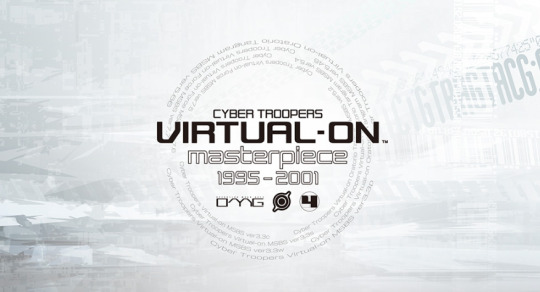
How long must we wait to see this?
So not re-releasing collections of classic SEGA titles makes them look either incompetent, lazy or just don't care. Maybe all the Staff currently working in their western branches have never played or heard of Virtual-On? More realistic and if I put on my industry experience hat on, could well be SEGA don't want to fork out for the translation costs as they feel it won't sell that well in the west.
Trouble is even that's a really bad argument. As with the PlayStation 5 just around the corner, if you release on the PlayStation 4 now and have it set up to run on the PlayStation 5. Then you have an evergreen collection of the three Virtual-On arcade games for the lifespan of the PS4 & PS5. So you won't need to look at releasing again until the PS6 hits. Smart developers and publishers are also aware that you have a captive audience right at the start of a new console generation. Making it the perfect time to release new IPs or update and re-release old ones. Around a price point of £15-20 and I'd say you can't go wrong.
Atlus 2020 re-release of the SEGA Saturn classic Princess Crown on PlayStation 4 is also in the same boat right now and as SEGA now own Atlus! Well you know how this story goes...
youtube
OH SEGA! Why do you do this to yourself... Even SEGA's Mega Drive library collections have been underwhelming, every time they stick about 50 games on it and leave it there. Often we get stuck with the same turkey's in the collection time after time too, like Altered Beast. While high quality later Mega Drive titles like The Ooze and the Japanese only Pepenga Pengo are often totally ignored. Really SEGA need to re-release every SEGA Mega Drive / Genesis game they every did (legal issues allowing) on one of these MD collections or split it over a couple of packs if needed or even sell them singly, at say a £1-2 price point each.
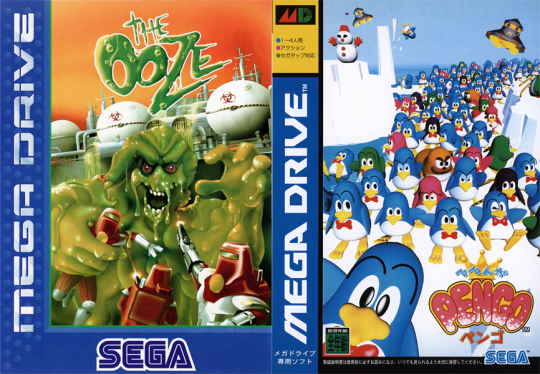
Yes that is Sonic hiding in the crowd at the back of the box artwork for Pepenga Pengo
Certainly SEGA have missed a trick by not doing an open Mega Drive emulator software game, that would allow other developers like Electronic Art, Capcom, Namco to also release their old Mega Drive games on it as separate downloads to plug into the main game. Which would then allow SEGA to re-release just about every Mega Drive game on Modern systems. Bar all those old license sports games that would be a legal nightmare to re-release and many were just awful in the first place. Yes, Altered Beast should be re-issued every time, but not at the expense of better titles, fans just want them all. Doing this SEGA could well find some of their classic games and character gain a whole new legion of fans. That's not even talking about where are the Master System, Game Gear, Mega CD, 32X SEGA Saturn and Dreamcast retro collections or re-releases.
So if like us here at the Randomised Gaming team, you want to see the Virtual-On Masterpiece Collection get a release in the west on PlayStation 4 along with Princess Crown. You are going to have to shout about it.
So reblog and like this post and get tweeting, chatting on forums etc.. as the old saying goes if you don't ask you don't get! Let's go with #VirtualOnGoWest & #PrincessCrownGoWest as hash tags and see how many western Virtual-On fans are out there and Princess Crown ones who want these collections released here.
Feature by Random Gamer Riven.
Twitter: RDGamerRiven
E.mail: [email protected]
Follow Randomised Gaming on Tumblr, for video game, art, reviews, features, videos and more. You can also find us on twitter and subscribe to us on YouTube for even more gaming content!
#VirtualOnGoWest#PrincessCrownGoWest#Virtual-On#Princess Crown#SEGA#Atlus#2020#PlayStation 4#PS4#Dennou Senki Virtual-On Masterpiece 1995-2001#電脳戦機バーチャロン マスターピース 1995~2001
25 notes
·
View notes
Photo
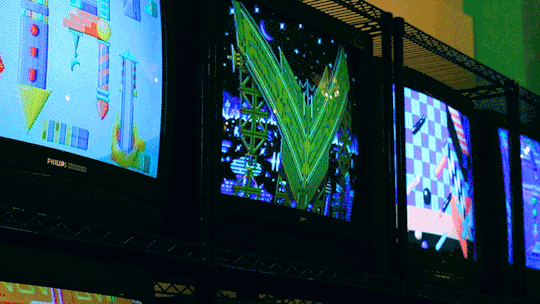
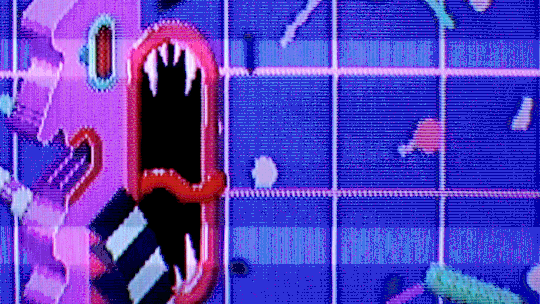
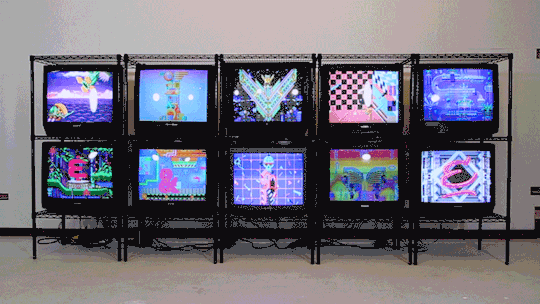
Dat Genesis Aesthetic
Welcome to the next level of the Attract Mode blog! As explained last time, every Monday or Tuesday (or Wednesday) I’ll be sharing all the wacky game culture goodness that crossed my path the previous week (mixed with bits and pieces that I’ve long wanted to share, but haven’t, cuz I didn’t think it worked as a stand alone post or some other reason).
And kicking things off is Studio SUPER’s “Lives & Times”, in which they created eight different animated scenes, all running in tandem on a CRT monitor (i actually discovered this in a post in a CRT enthusiasts group I belong to on Facebook, which is a private, so I’ll say no more), and all of which screams dat Genesis aesthetic. Each of the ten monitors displays a letter, spelling out “Lives & Time”; the above are actually animated gifs, but due to Tumblr’s technical constraints, they’re simply still images, hence why I’m not going to bother to share the individual monitors (so please check out the source to see everything in action).
But yeah, it once again warms this old school fan of Sega’s 16-bitter that the kids today are embracing the look and feel of the platform, whereas those used to be punching bags, primarily among Super Nintendo devotees. Though, to be honest, the above actually reminds me of 32X’s aesthetic; the other night was my yearly attempt at giving Knuckles Chaotix another shot, and dear God does it ever look like someone attempt at making a game based upon found internet art and vaporwave album art that’s all been inspired by the Genesis, which means I absolutely adore AV, but dear God is it unplayable or what.
Back to the Genesis/Mega Drive real quick; here’s your new desktop wallpaper, courtesy of @SEGAotaku; you’re welcome…
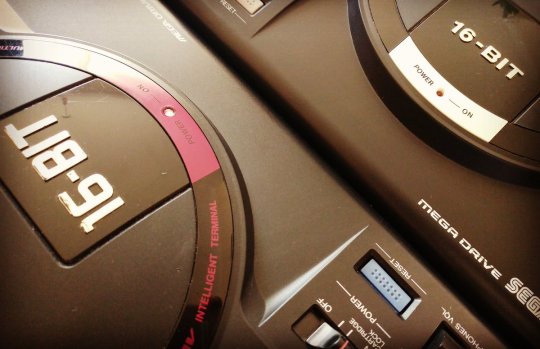
With the new way of doing things around here, bits of randomness that had been the basis of semi-regular gags will be folded into the new weekly format. Like the Please Enjoy entries. So, please enjoy this wonderful mash-up of Sonic and Totoro, with a dash of the Iron Maiden font… on a t-shirt (courtesy of twosatans)…
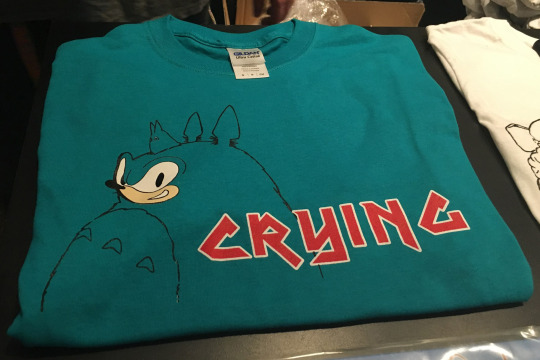
It’s that time again, in which I really wish I had a PC. And GDC has barely gotten under way! By the end, I’ll no doubt see some new game that I’m dying to play, but cannot, unless it gets ported to the PS4. Though in this instance, I’m talking about DESCENT, which Prosthetic Knowledge describes as “Part music video, part demoscene production, part art history remix”. At least I can enjoy this video in the meanwhile…
vimeo
Sorry, can’t say I agree with this statement. As for my choice for top FF, you’ll have to see what I wrote on the wall of the men’s room at Grassroots Tavern (located on the sound side of St. Mark’s between 2nd and 3rd Ave) in person….

Yet another “feature” of this blog, one that was only recently proposed, are semi-arbitrary comparisons. And they too will be part of the package every week, starting with; which do you prefer, this old photo of a young boy, proudly showing off his newly unwrapped Galaxian tabletop arcade cab, courtesy of ausretrogamer…
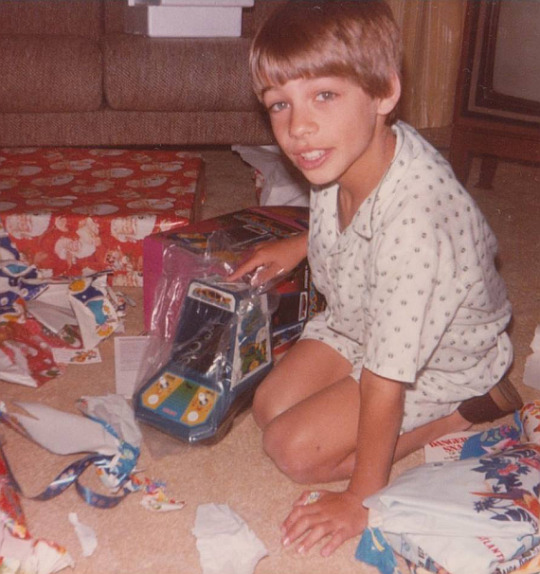
Or this somewhat more recent pic of young girl, one who is to ecstatic to have gotten a Game Boy Advance SP, courtesy of 2000ish…

Classic Gaming Quarterly just posted another Let’s Read, its in-depth, page at a time analysis of a classic gaming mag. In this instance, it’s Electronic Gaming Monthly #6 from early 1990…
youtube
Among the more interesting questions asked and observations made…
- Yeah, what exactly was the deal behind Fester’s Quest? Why in the heck was there an Addams Family game in the year 1989 (and not 1990 as stated in the video) for the NES? Then again, the same could be asked of Midnight Mutants, which was based upon the Munsters for the Atari 7800 in 1990. Is there a connection between the two?
- Not only did I have no idea that there was an arcade board based upon the PC Engine, I also never made the assumption myself that the SuperGrafx was perhaps originally destined for the US, given that the name of the PC Engine follow-up is more closely tied to the name of the US version, the TurboGrafx!
- Though I do recall people not being all that impressed with Super Mario World’s visuals upon release, as well as how the original Game Boy was considered a disappointment for a long while there. In fact, in EGM’s end of the year assessment for gaming hardware, for many years there, the GB was constantly scoring super low numbers.
One can never understate how important Pokemon’s arrival was for the platform in the US, which is actually 21 years ago today BTW/FYI!
Speaking of Game Boys, yet again, I really wanna play Kimutaku vs Predator; according to obscurevideogames, Takuya Kimura is from the J-pop boy band SMAP, but I bet most of you knew that already…

And back to the subject of video games rags; which cover featuring a shmup do you prefer, the one with Xevious…
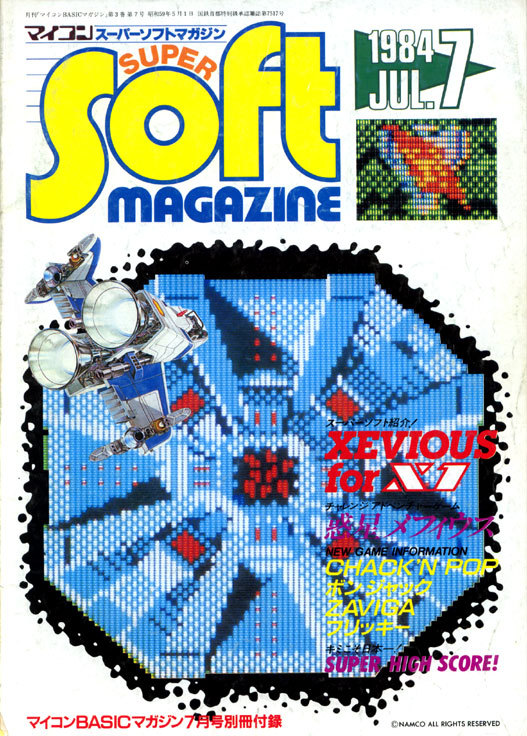
Or Radiant Silvergun? BTW, both were found over at the shmups Tumblr, naturally…
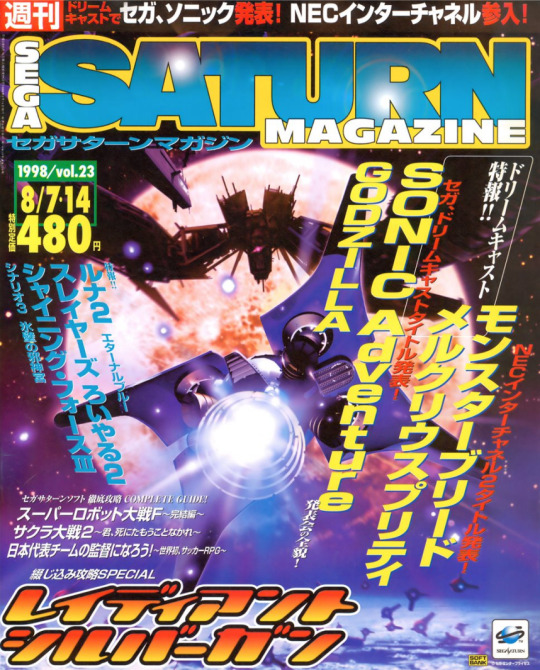
Remember my round up of classic video game music on vinyl? Well here’s a clip that I wanted to include but couldn’t cuz I hit the limit of YouTube embeds in a single Tumblr post, plus it’s of a re-release on CD; it’s the third disc of a trilogy box set, of classic Namco tunes, and perhaps the best of the bunch (since I realize straight up Xevious audio ain’t for everyone)…
youtube
Sticking with the subject of music, Kotaku actually posted a real oldie but goodie, and since it was on a Sunday, there’s a good chance many may have missed it, so…
youtube
And back to shmups, as well as something else that one of the major outlets recently posted that’s definitely worth a look for anyone who may have missed it, is The Verge pointing out a rather intriguing part of a Fast Company write-up on Atari head honcho Nolan Bushnell’s early 80s high-tech incubator. Which is how the triangle in virtually every GPS system out there is actually the ship from Asteroids!
Which do you prefer, this old pic of Mexican wrestlers from Lucha Underground playing Mortal Kombat X on the PS4….

Or this recently release image of the WWE’s John Cena playing... I dunno actually... on the Nintendo Switch….

Speaking of the Switch, my aforementioned personal fave angry video game nerd recently shared his thoughts on Nintendo’s forthcoming hybrid home console/handheld. The title pretty much says it all: “NINTENDO SWITCH CAN SUCK IT!!!” is pretty much all you need to know. Still worth watching though! As is his recent follow up…
youtube
Said it before, and I’ll say it again; I don’t have to agree with BitHead1000 to find him hilarious.
As you may have heard, a Dreamcast signed by Limp Bizkit’s Fred Durst was recently up for grabs on eBay. The original auction ended without a winner, which means everyone out there still has a chance to be one! One of six; I want to know the circumstances that led to Durst signing a Dreamcast, let alone several. Though I have to wonder if the seller will actually go through them all, let alone the first…
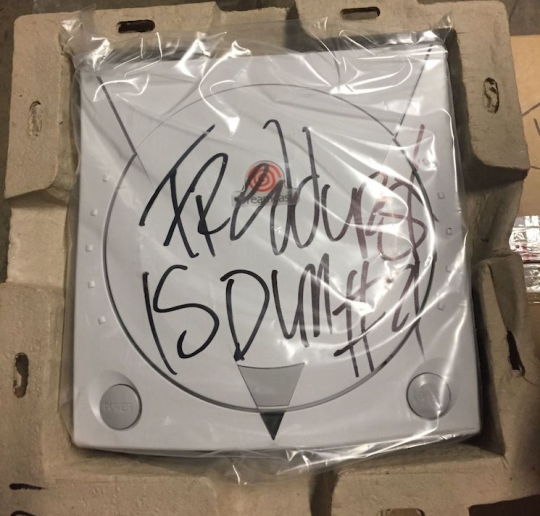
This animated gif by mazeon really makes me wish that there was a video game based upon The Black Hole. Actually, it’s ripe for a LucasArts/Double Fine-esque adventure! What do you fellow fans of the movie think? All six of you…
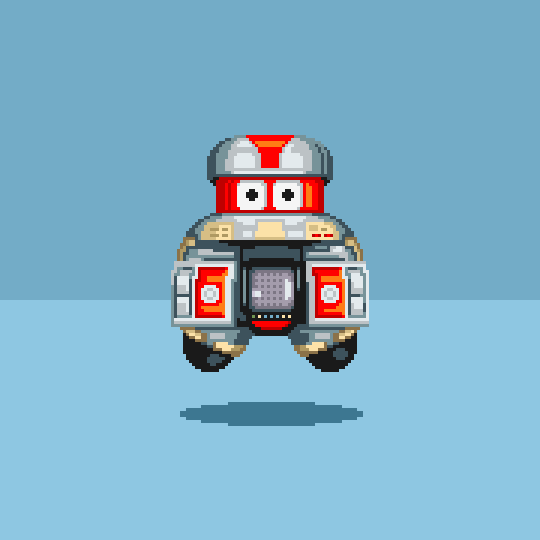
And finally, one last comparison; which do you all prefer; this Virtual Girl, who I found via posthumanwanderings…

Or this Virtual Boy wearing and Mountain Graphics’s STAR SOLDIUS shirt, which you can nab in the Super Attractive Club shop, along other things…
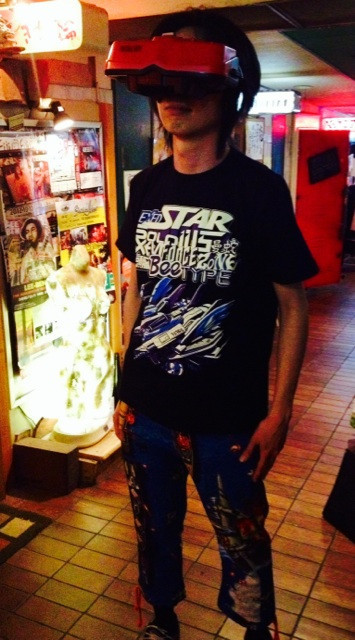
Don’t forget: Attract Mode is now on Medium! There you can subscribe to keep up to date, as well as enjoy some “best of” content you might have missed the first time around, plus be spared of the technical issues that’s starting to overtake Tumblr.
26 notes
·
View notes